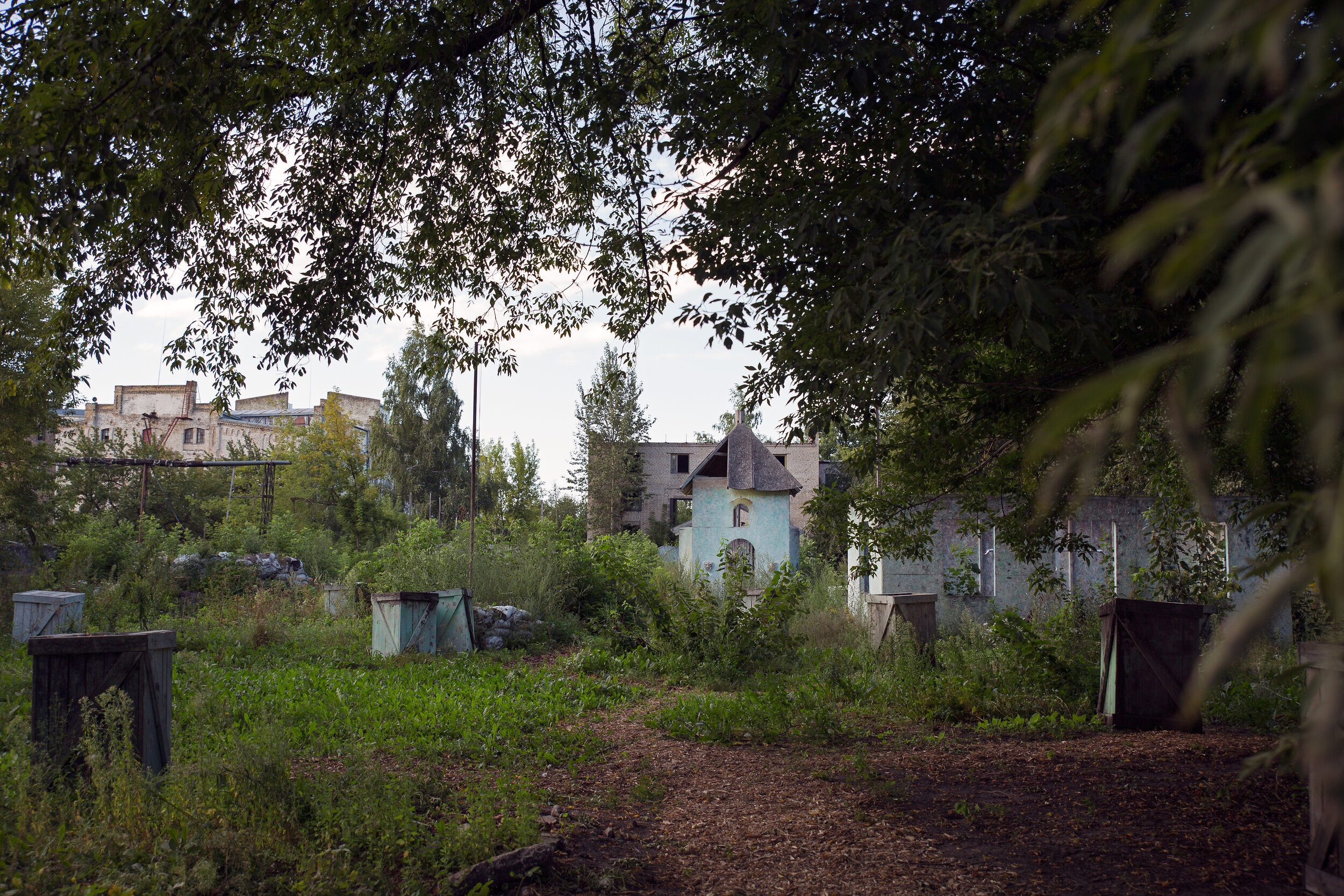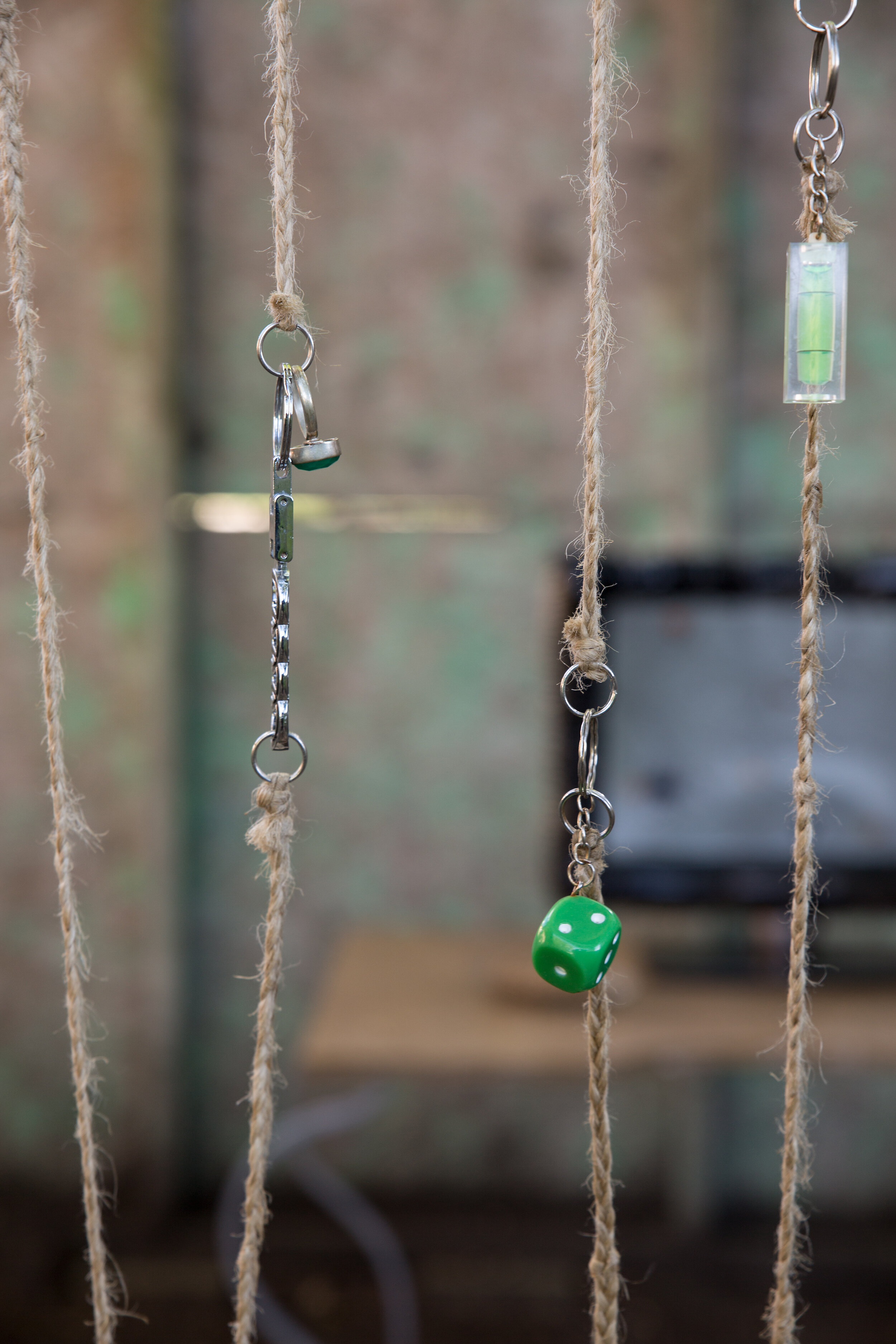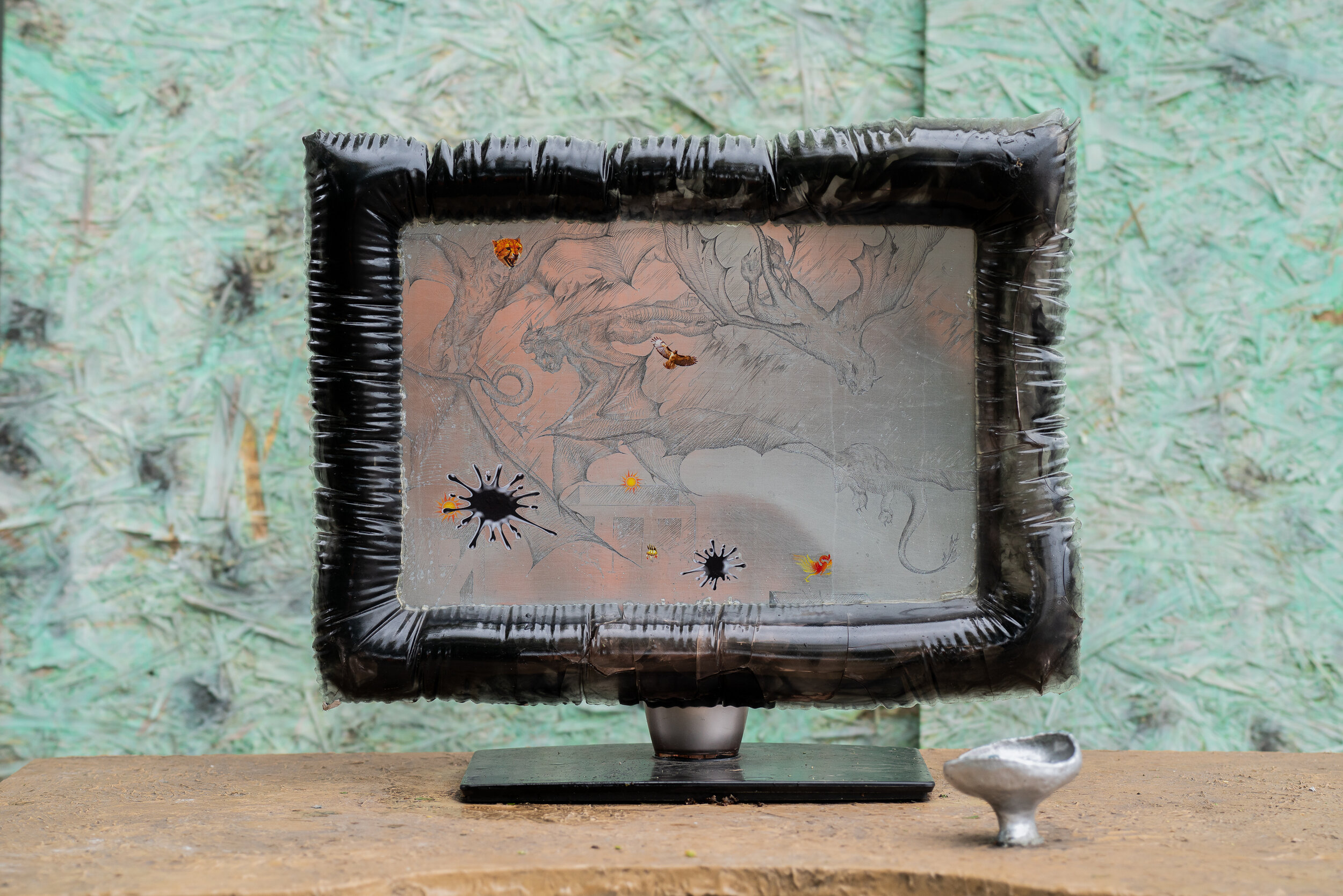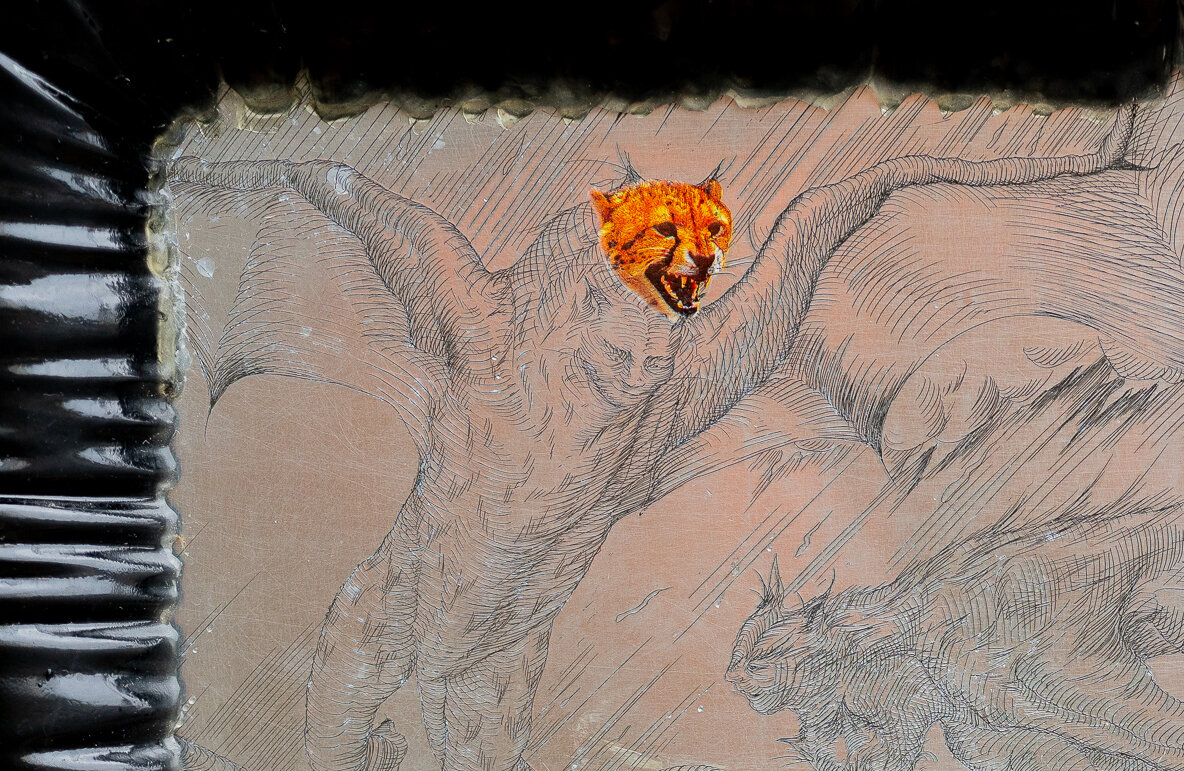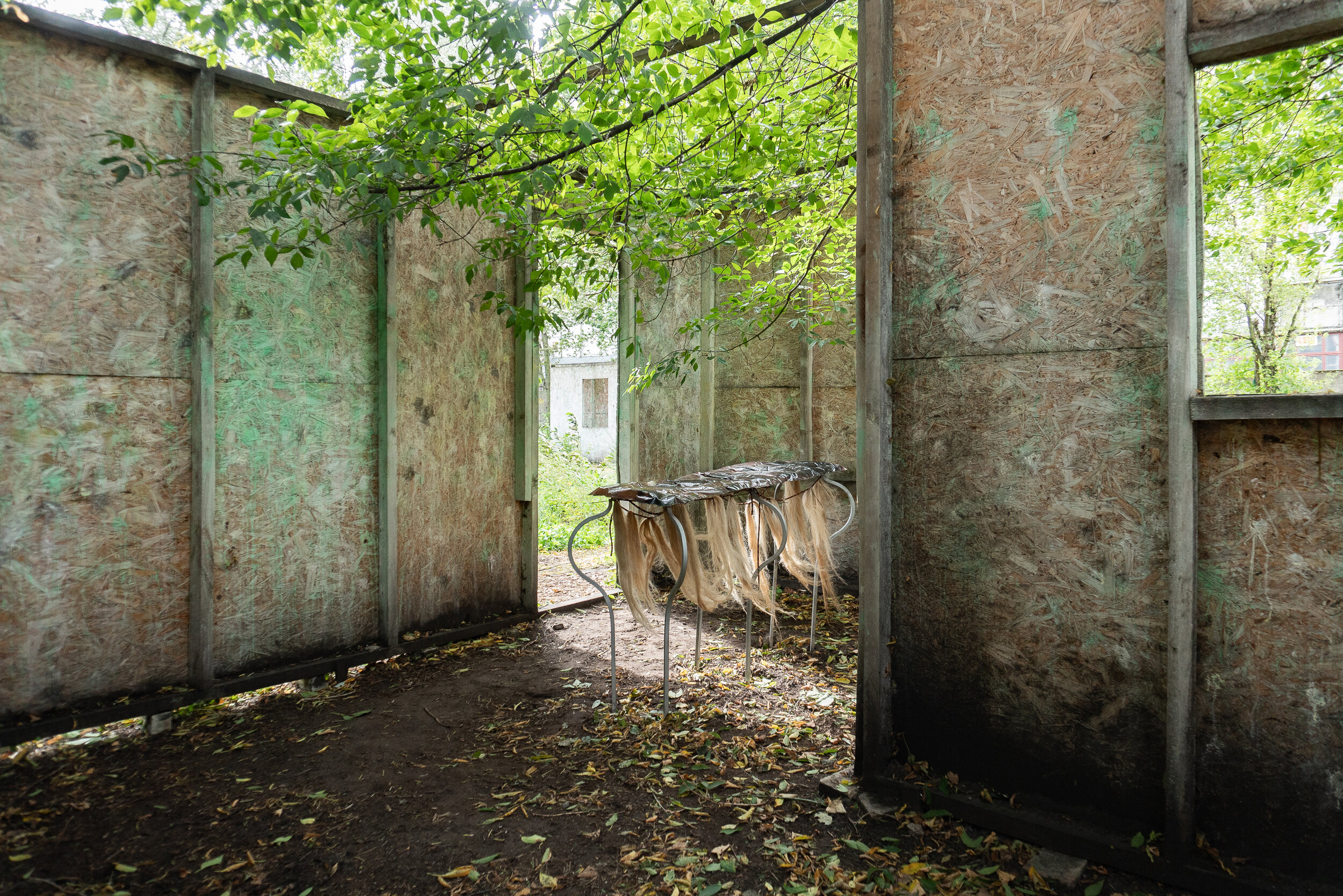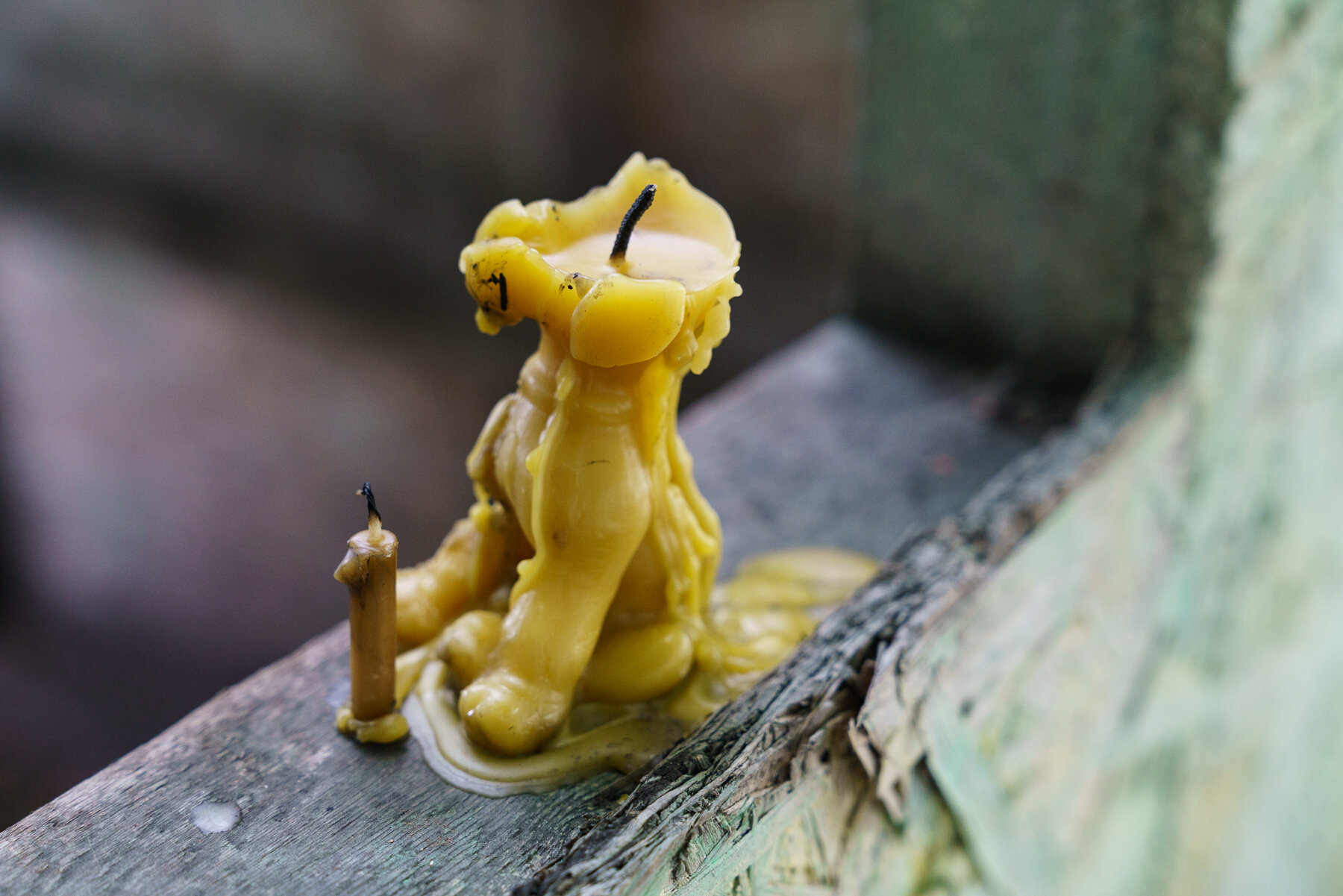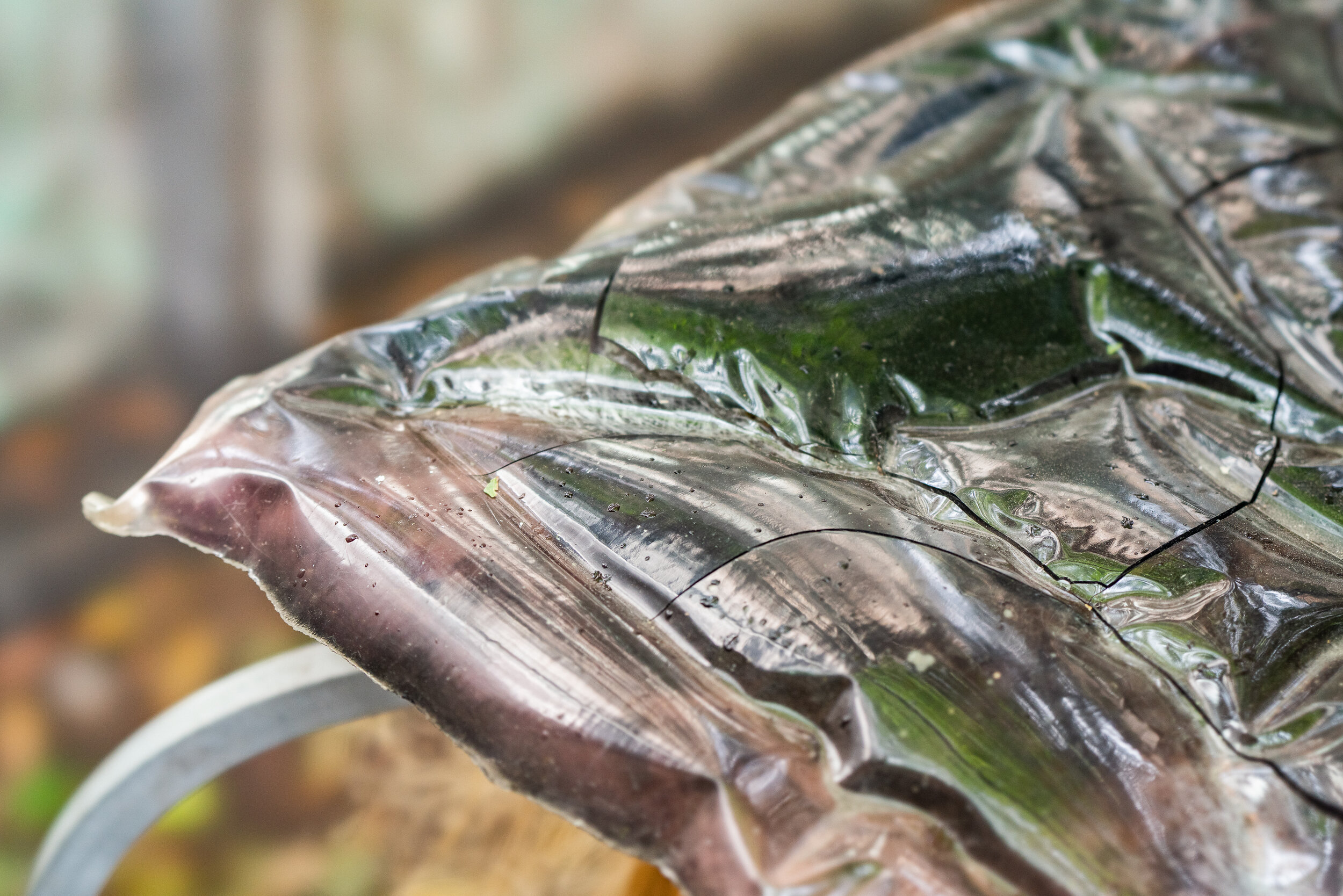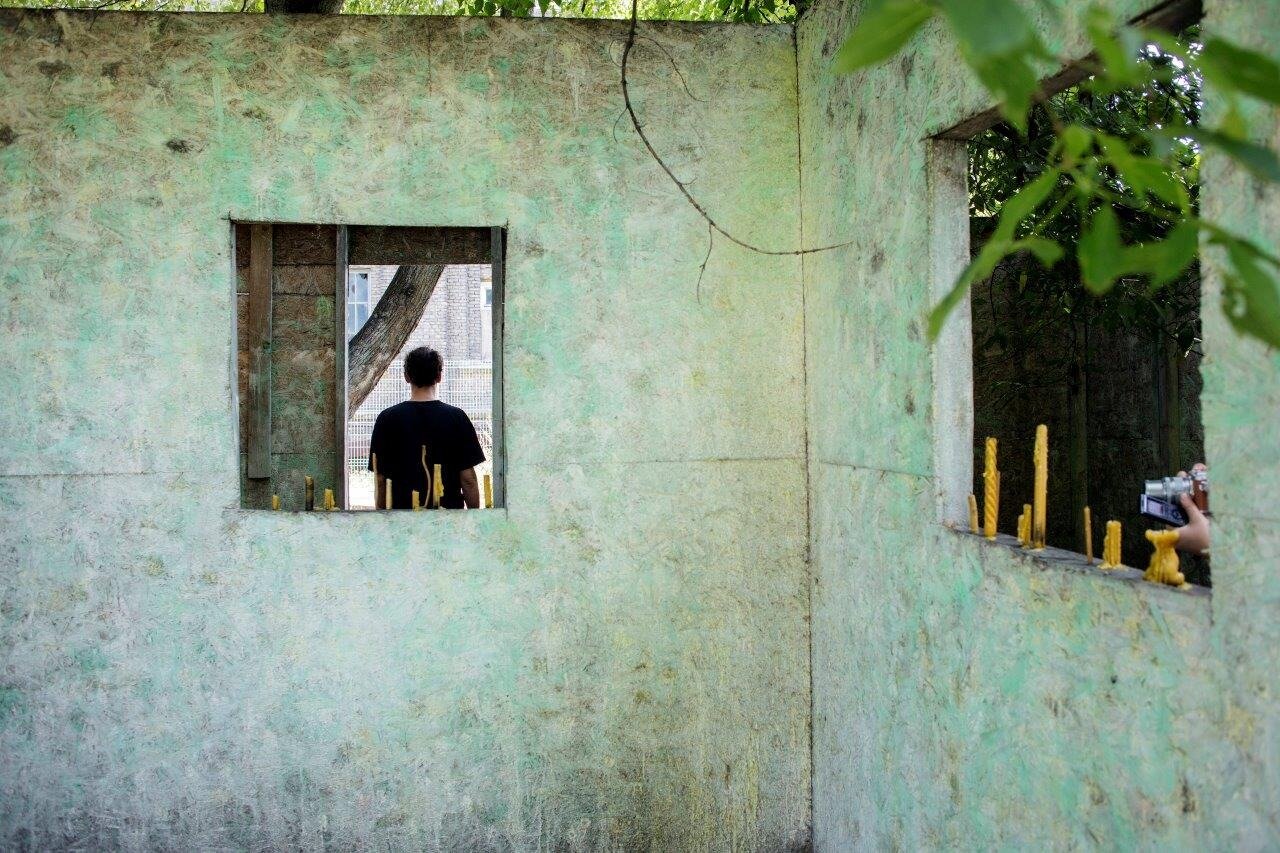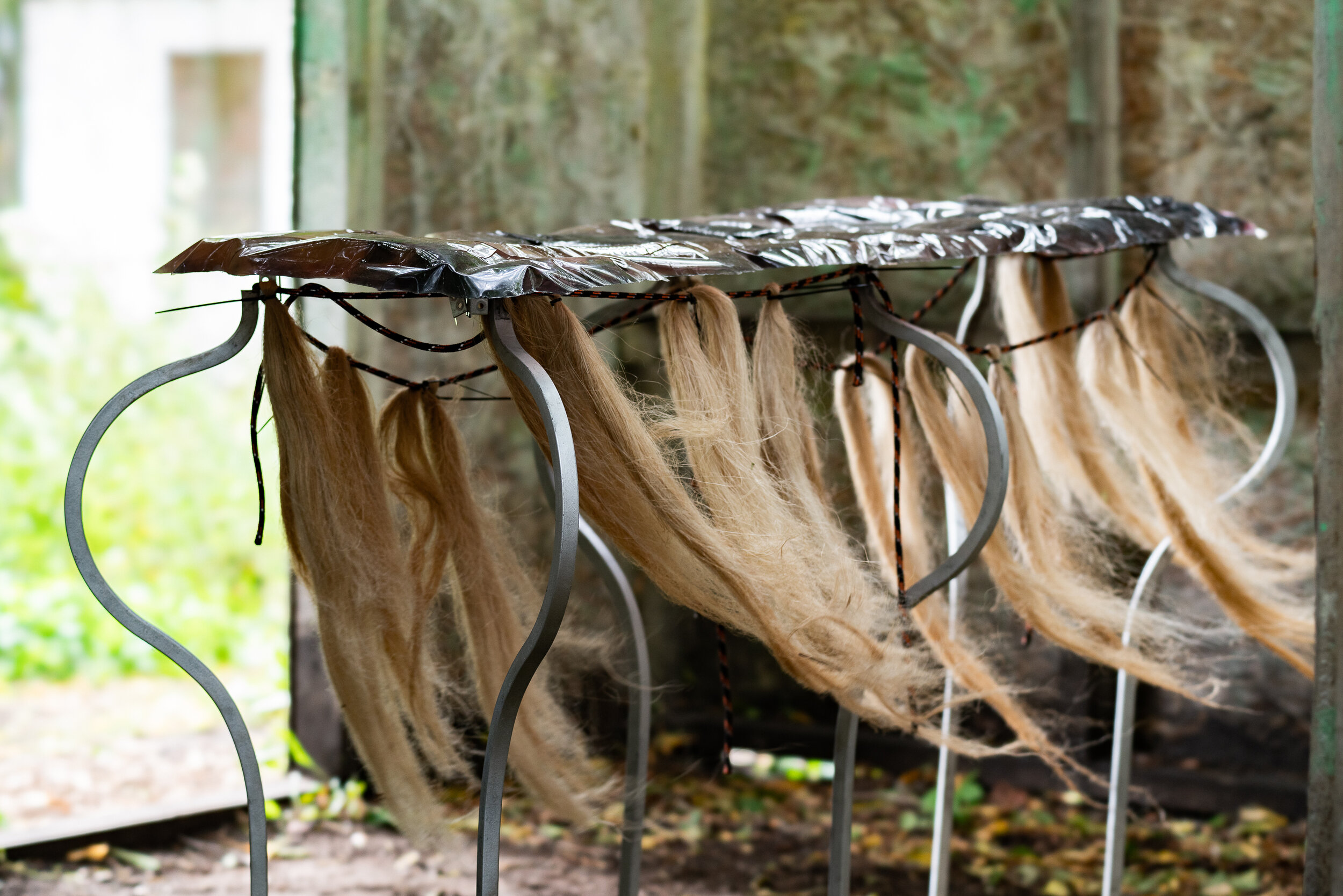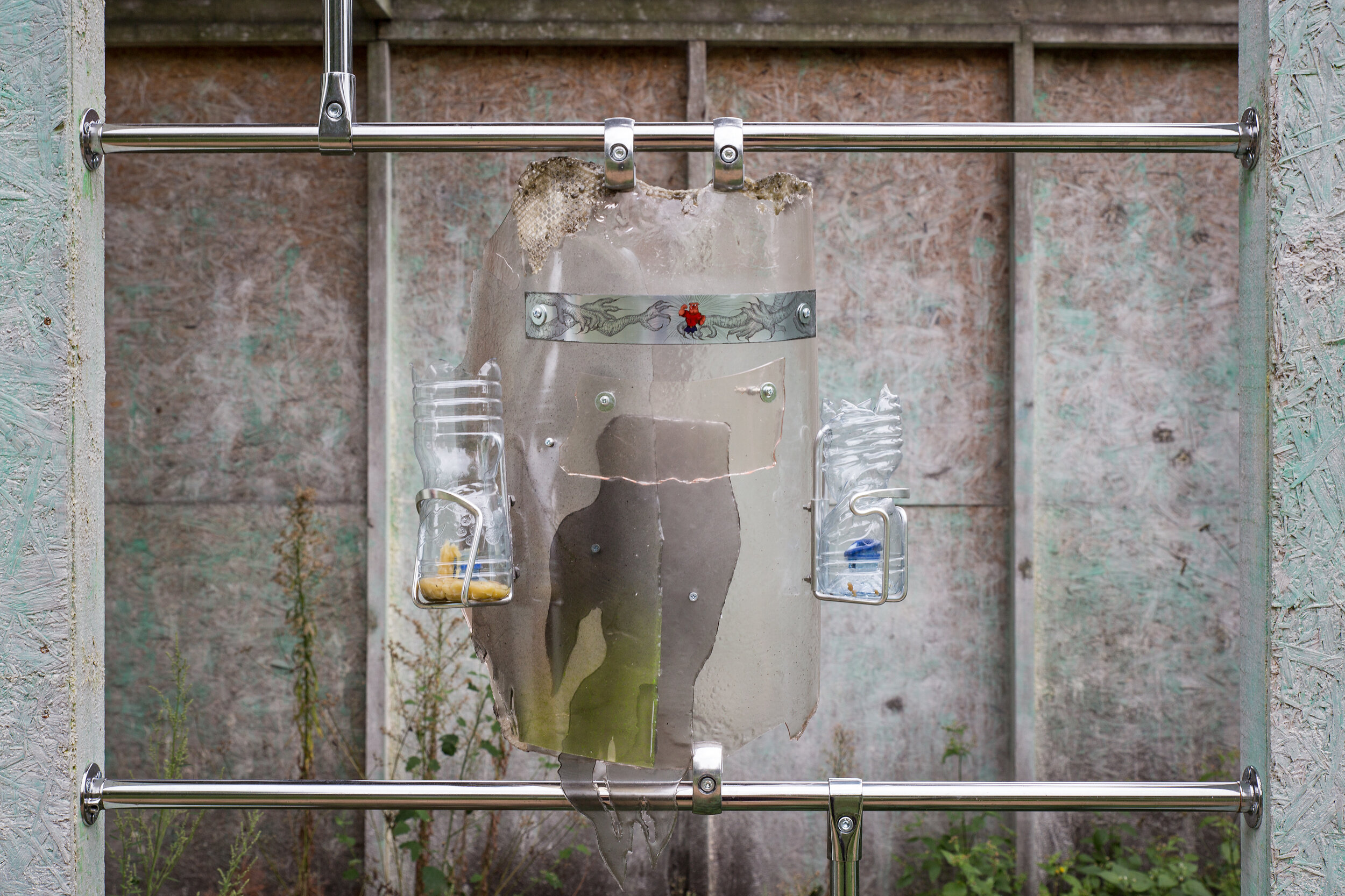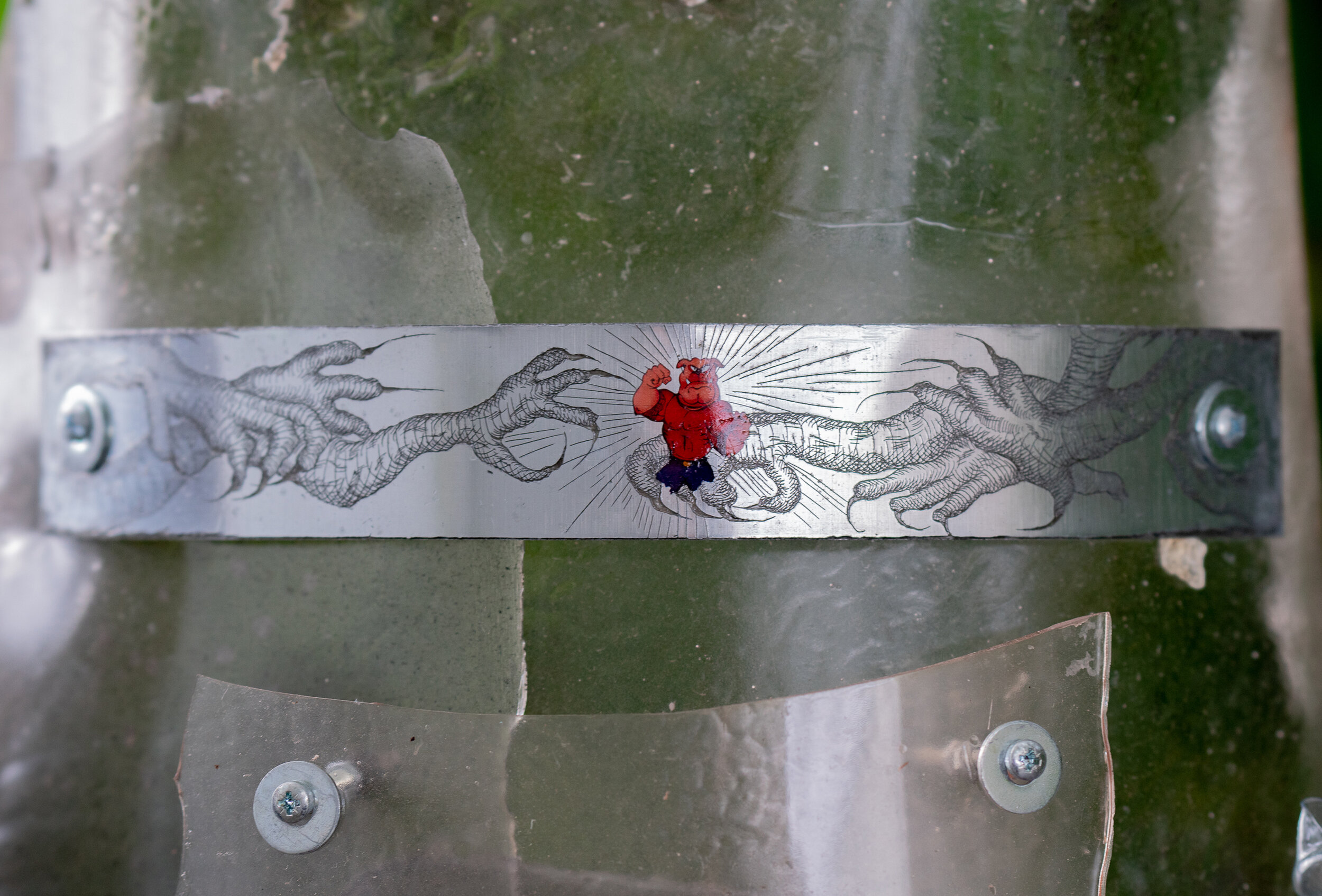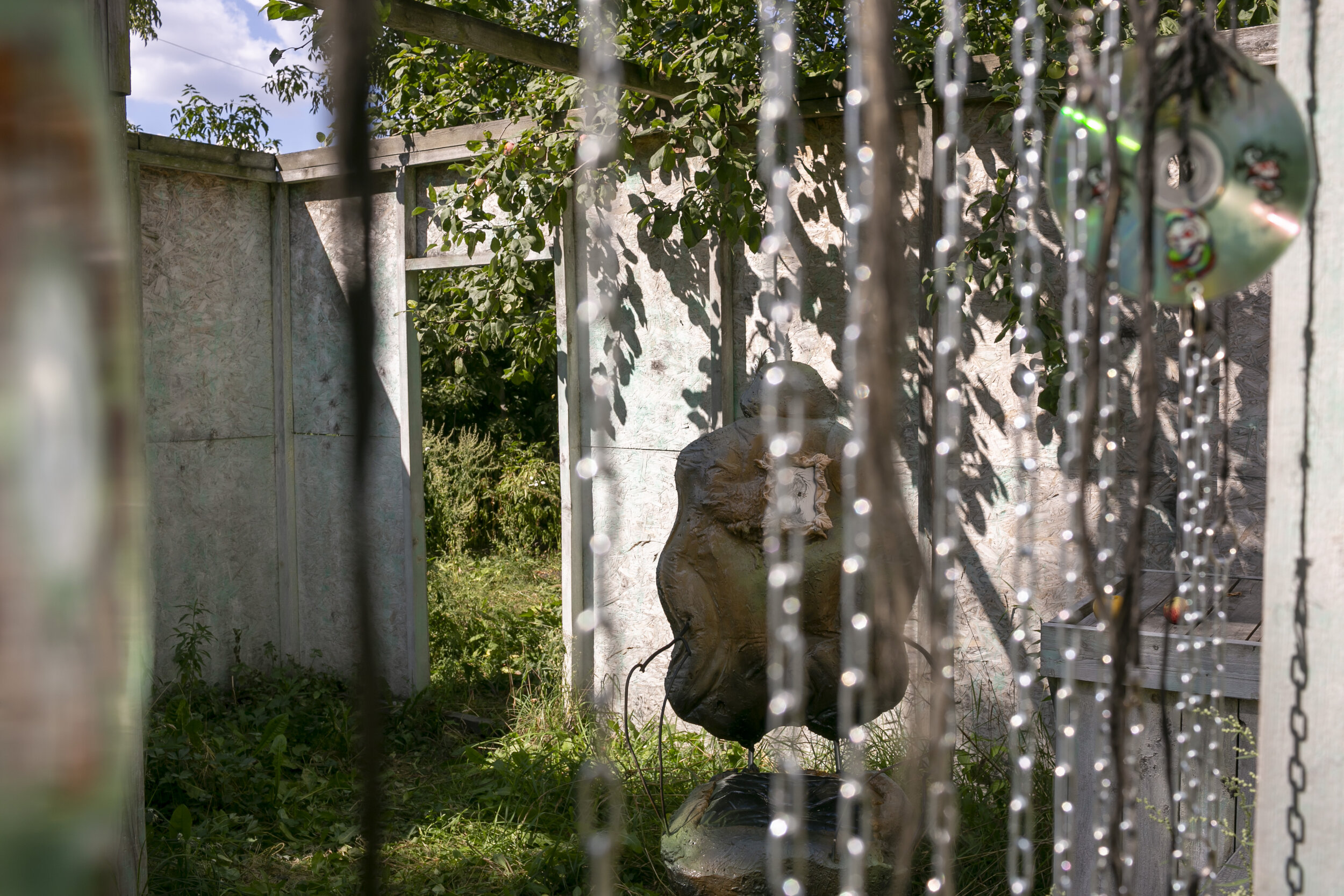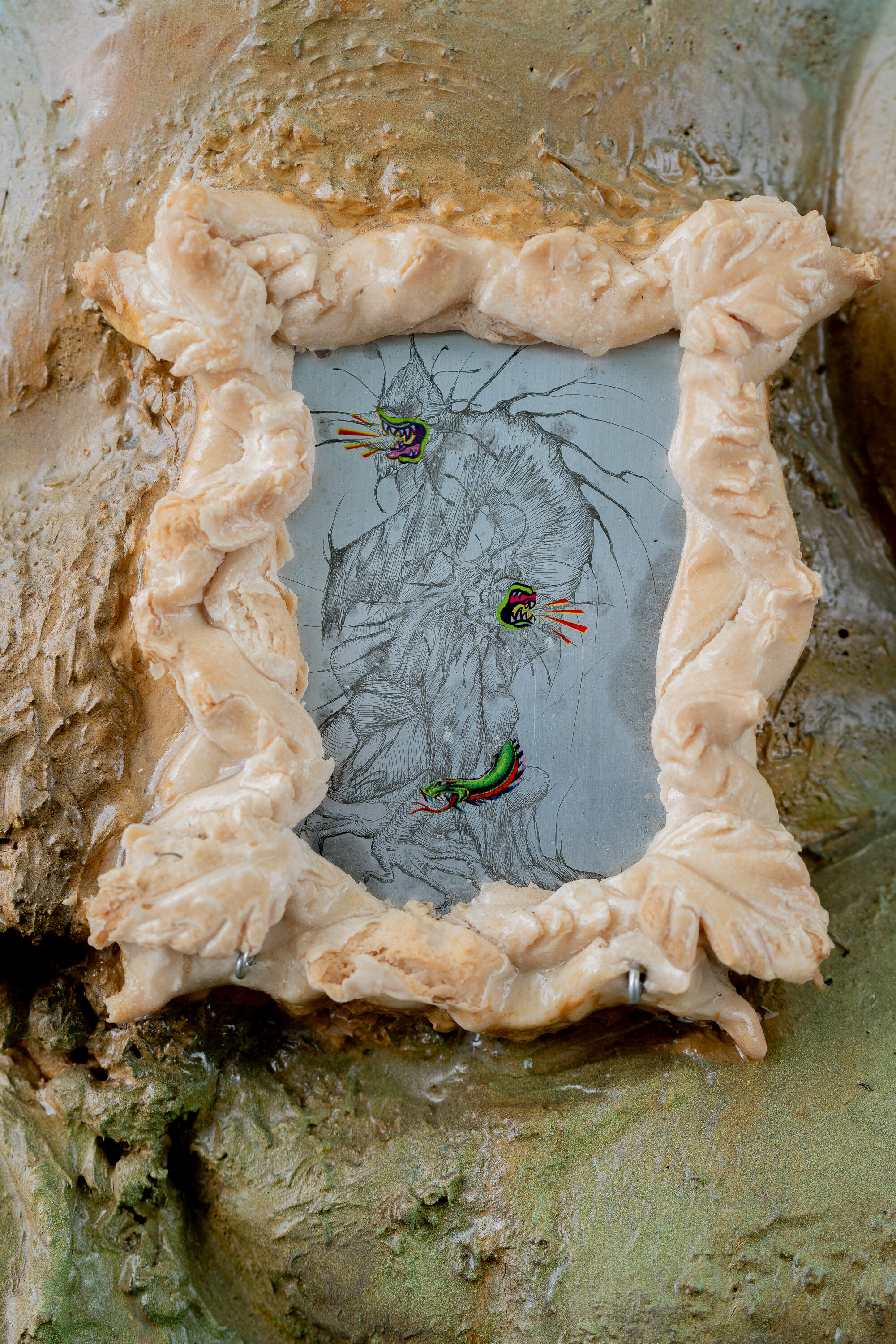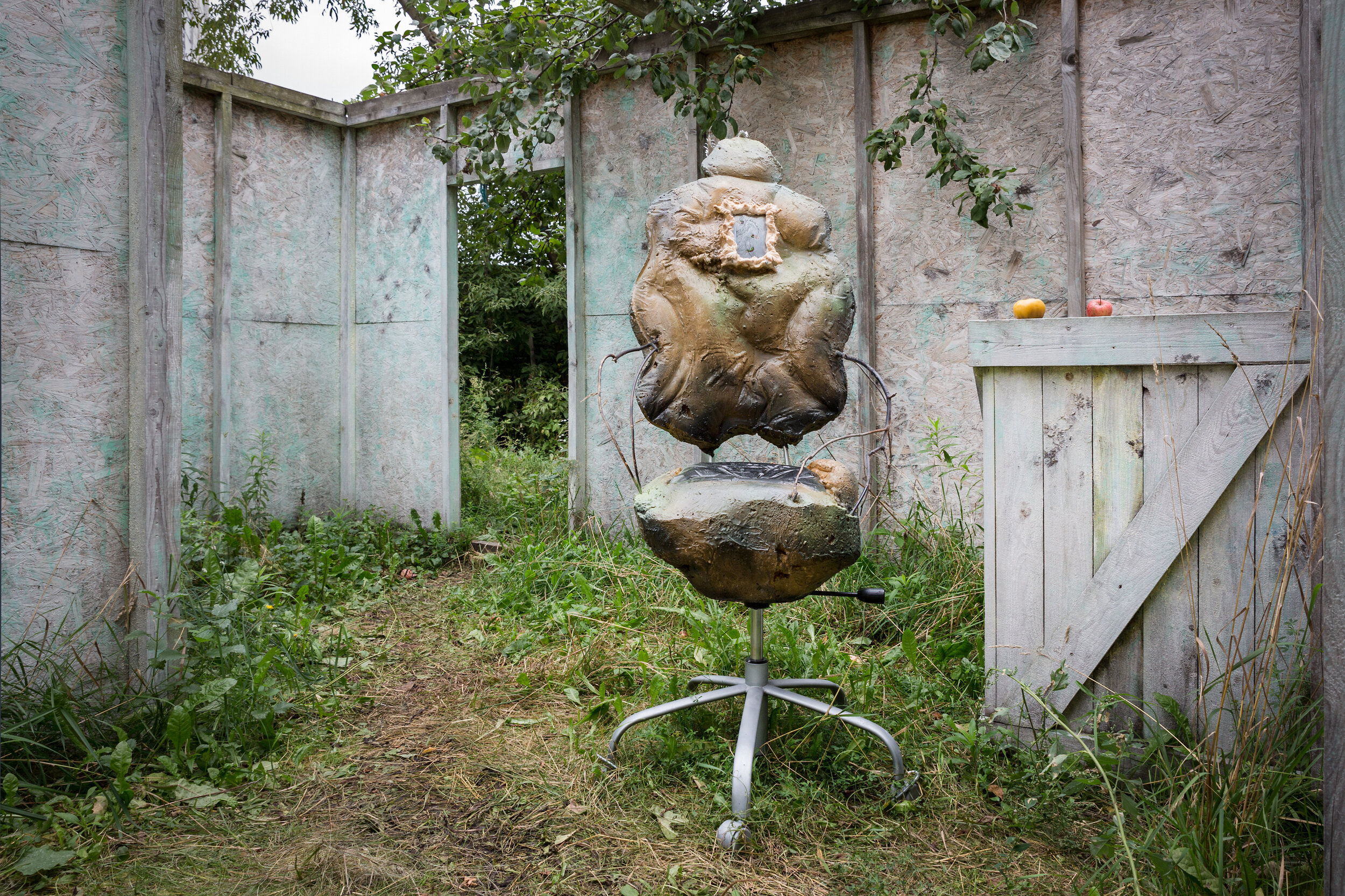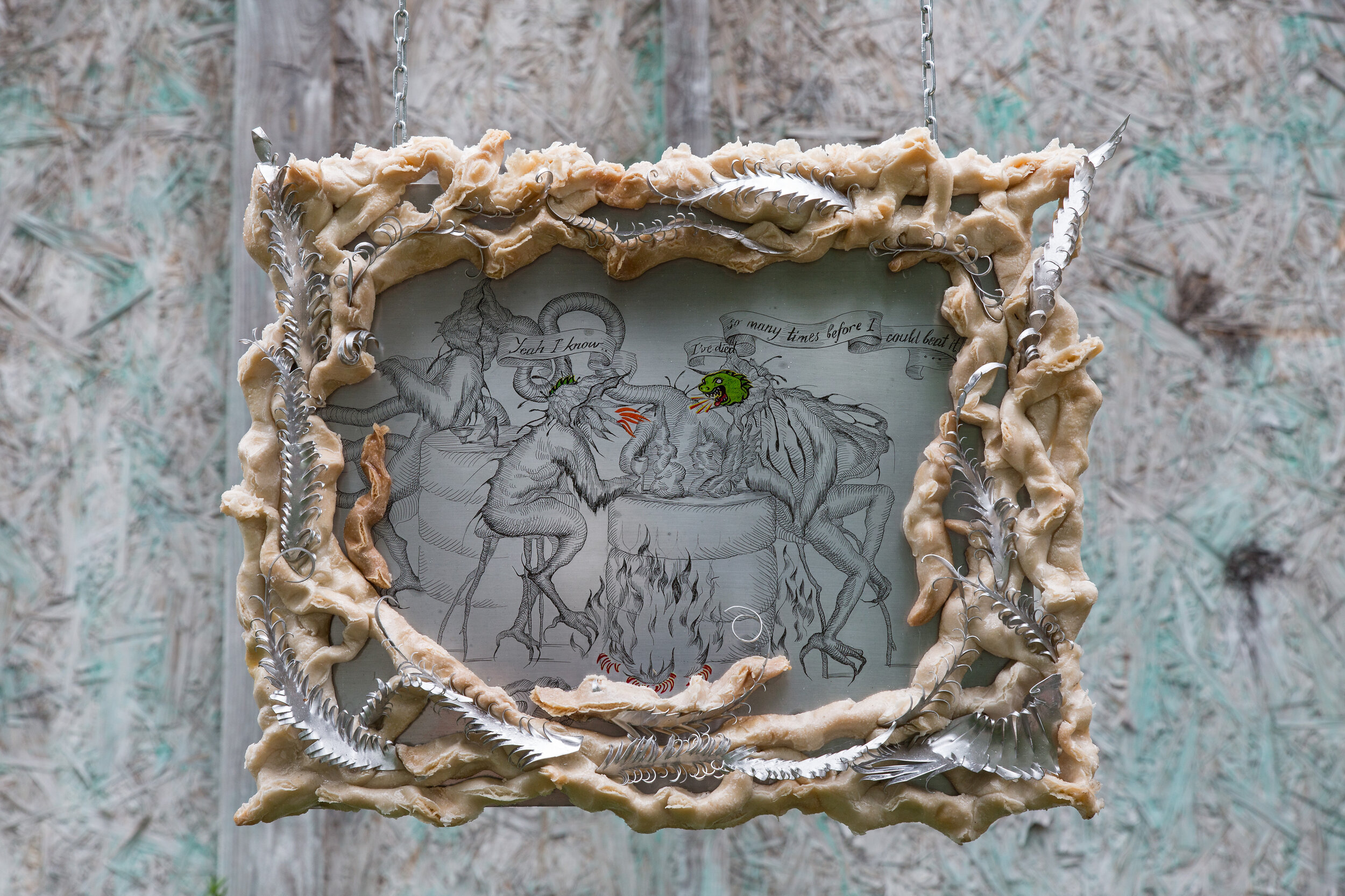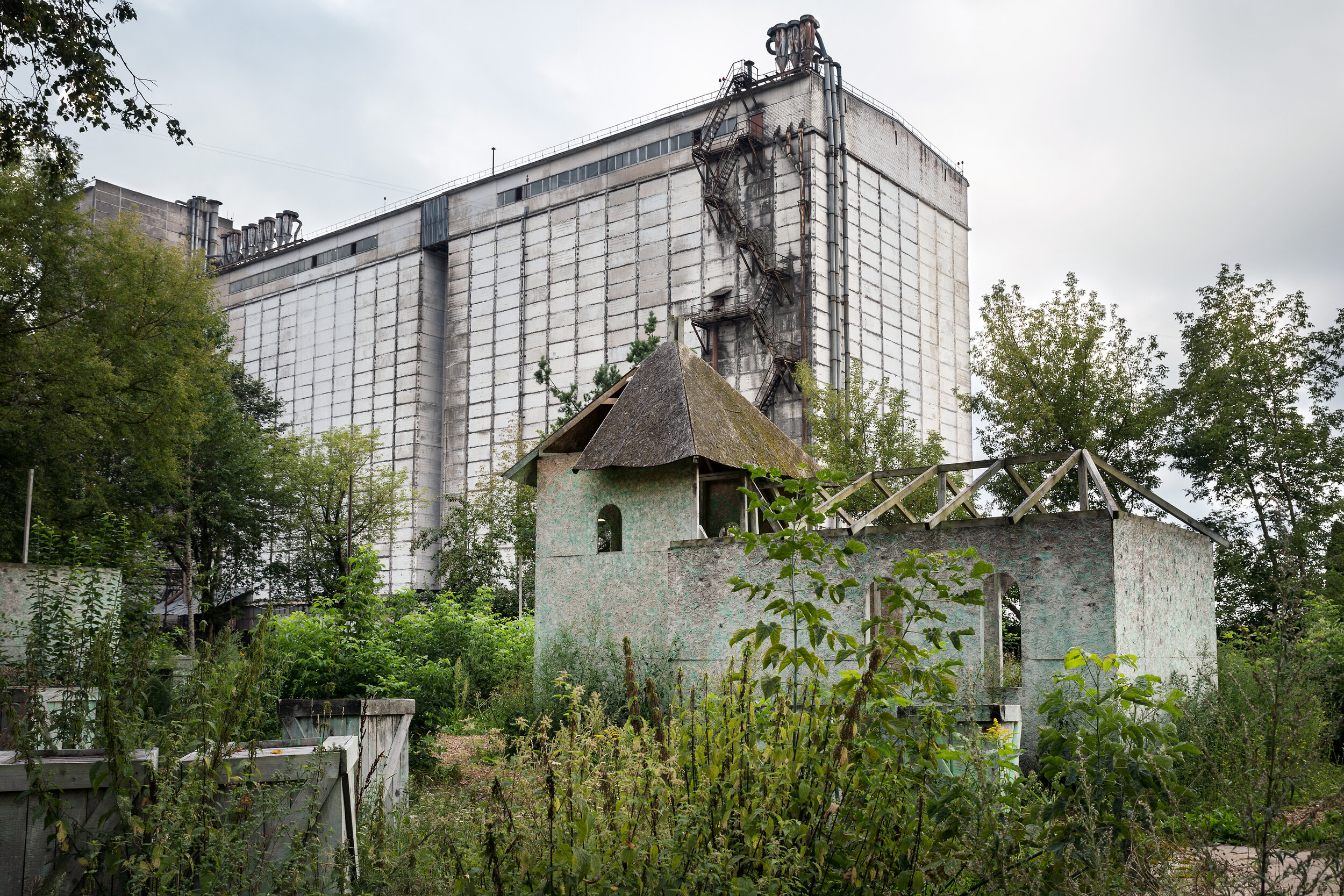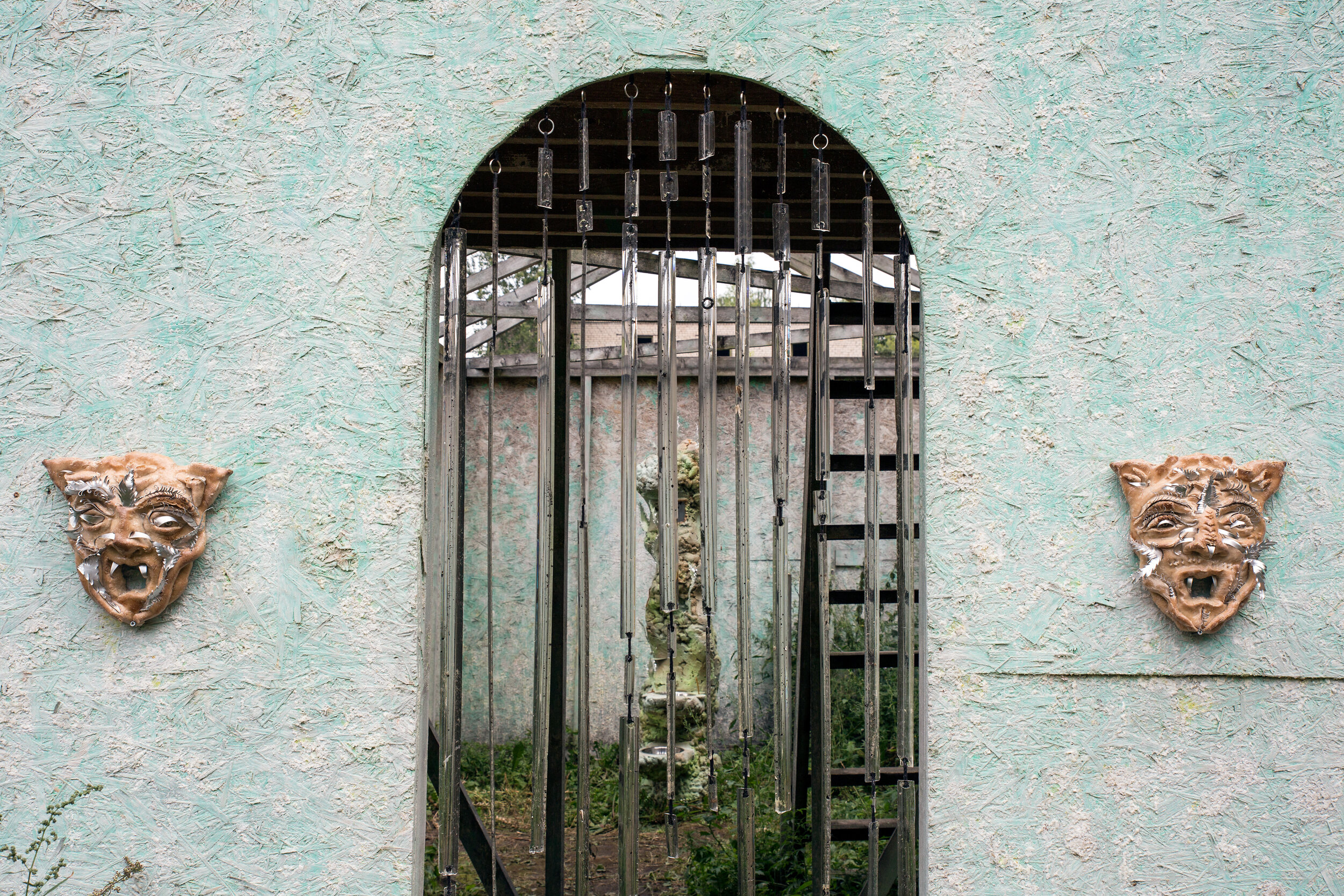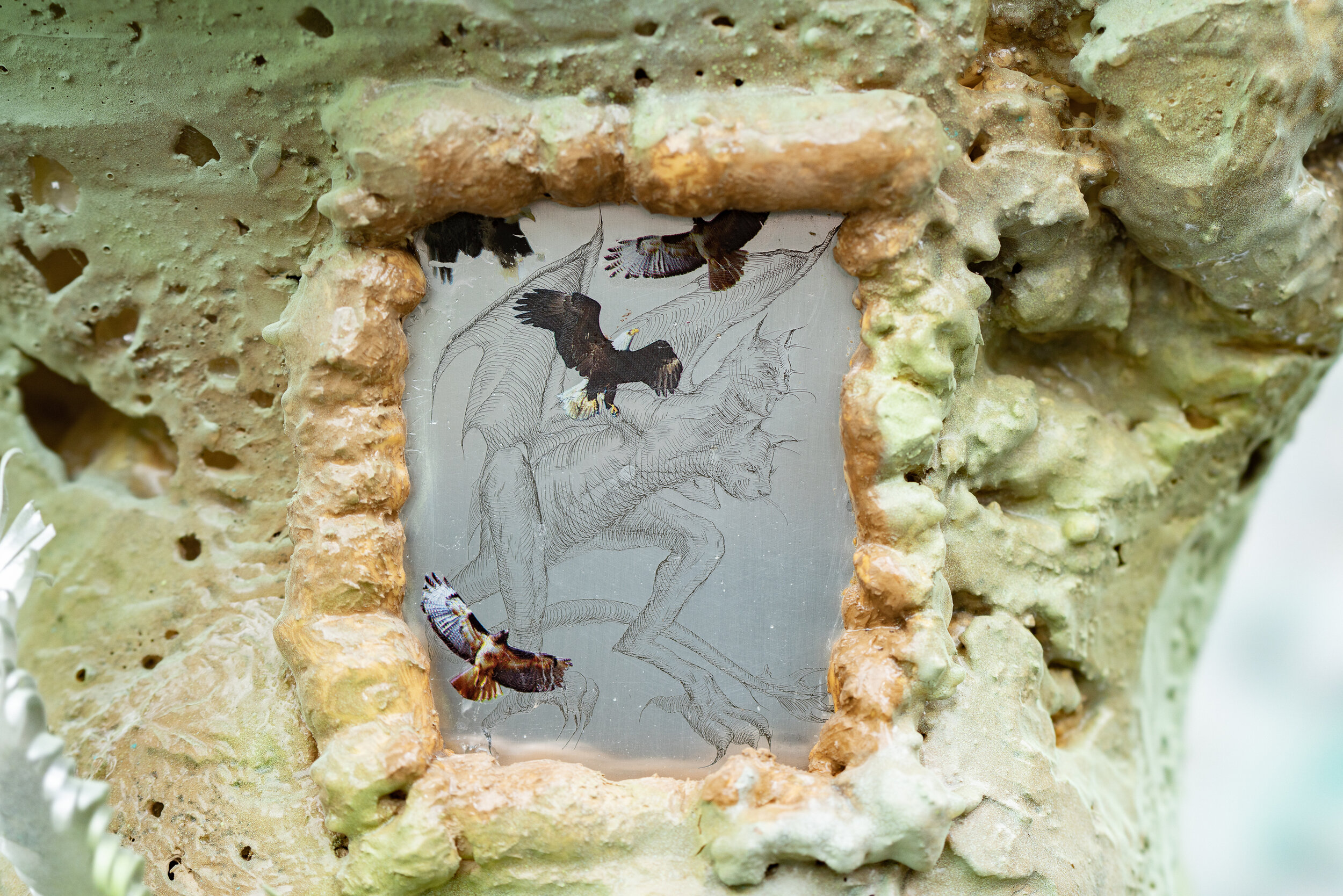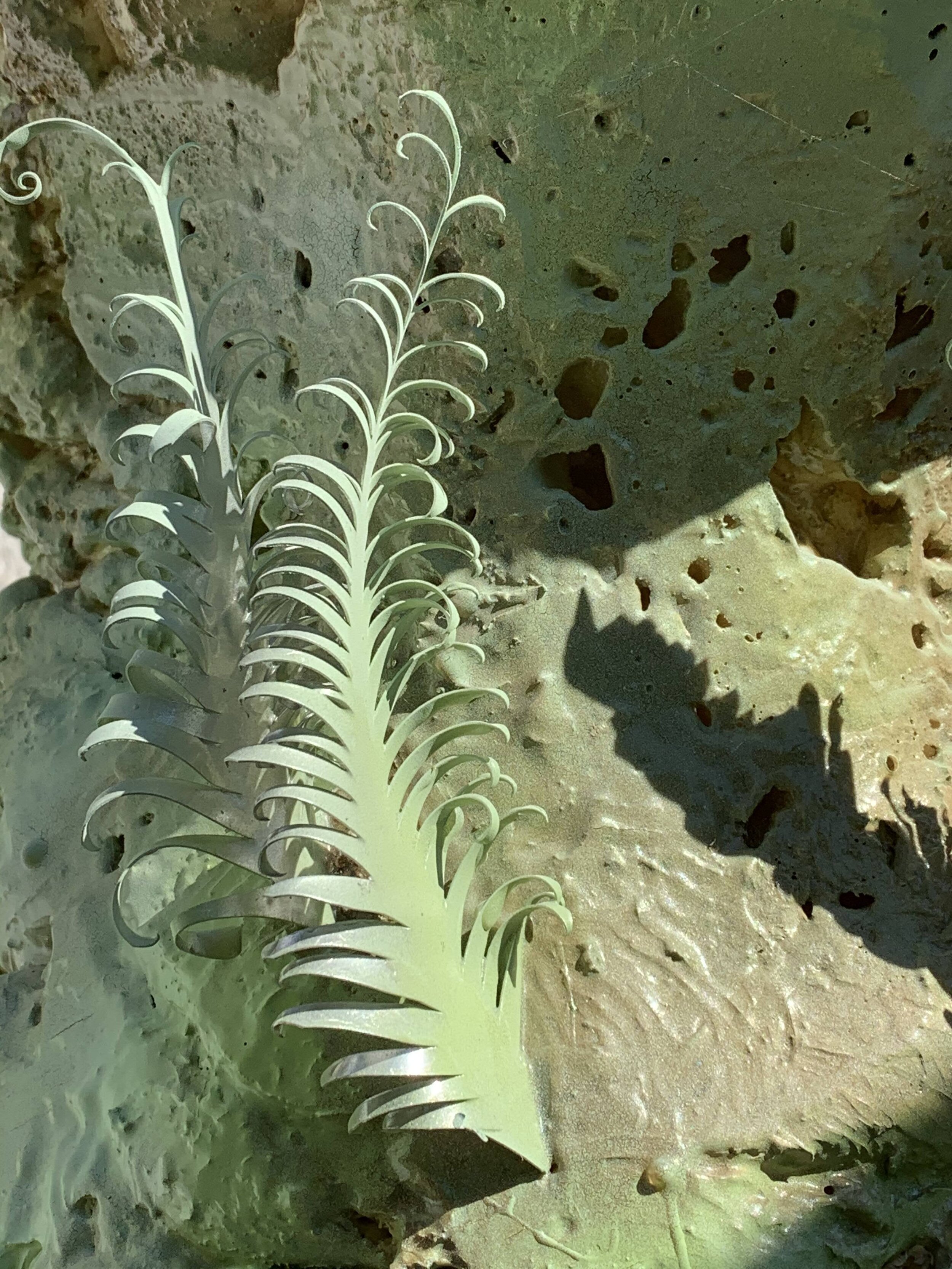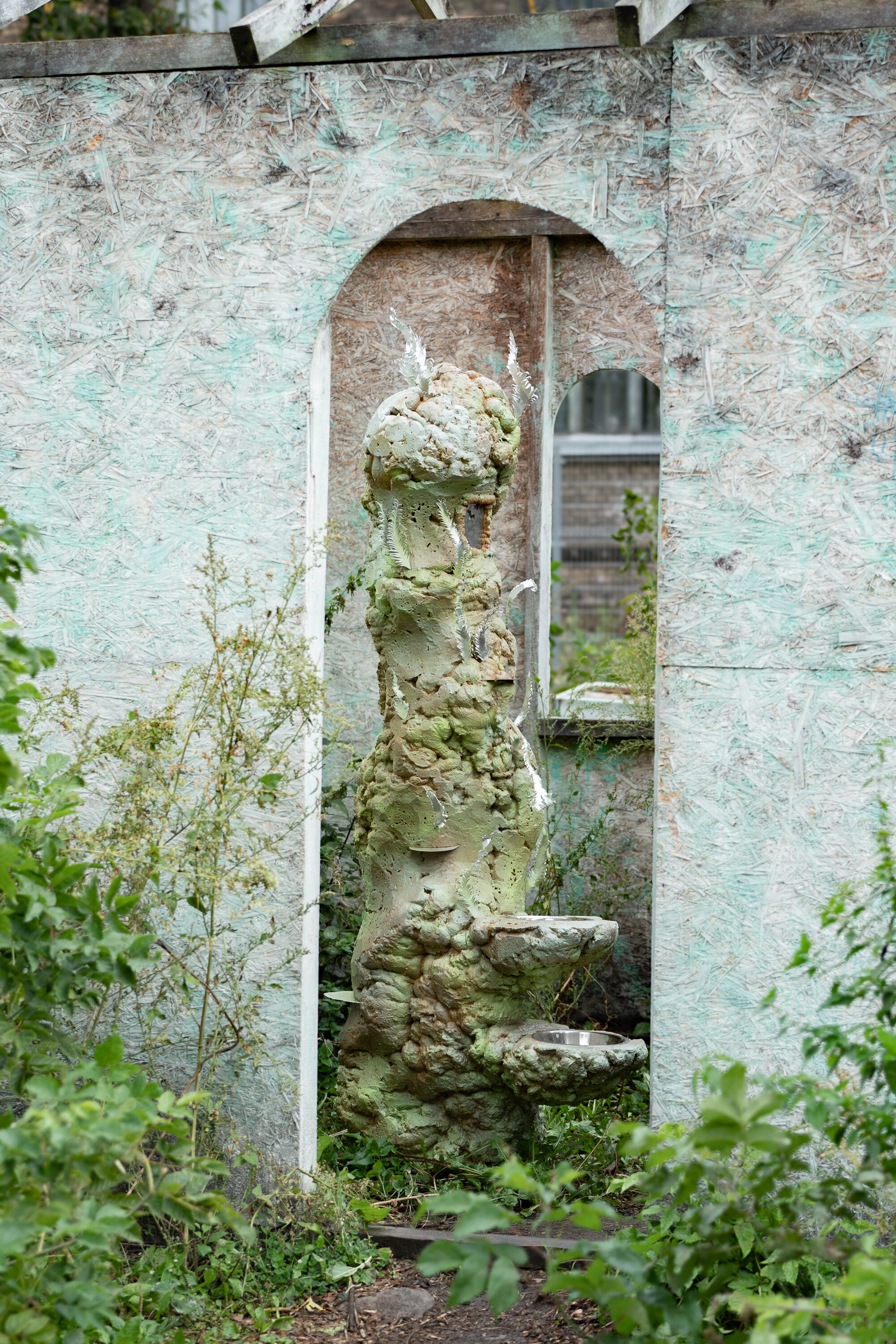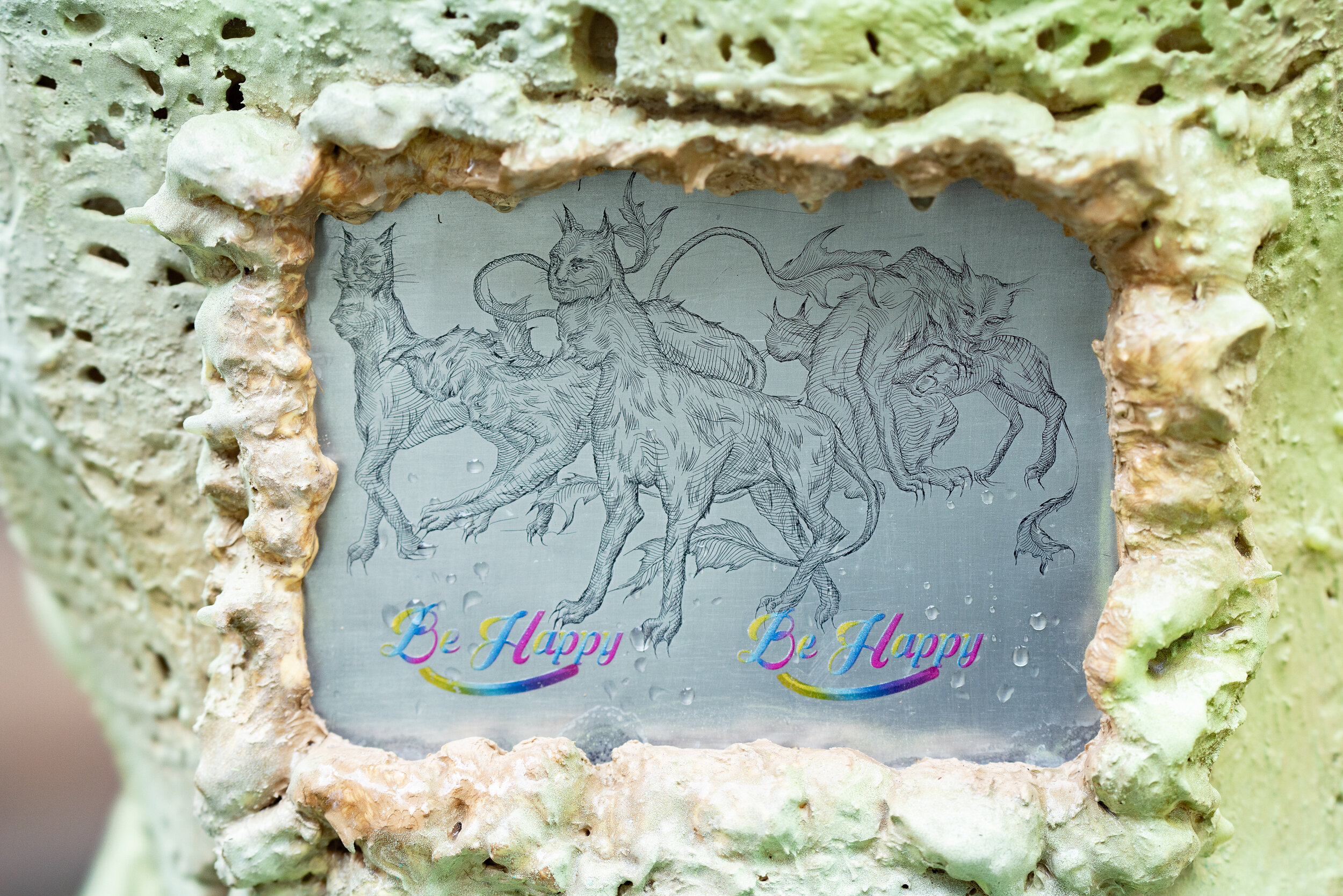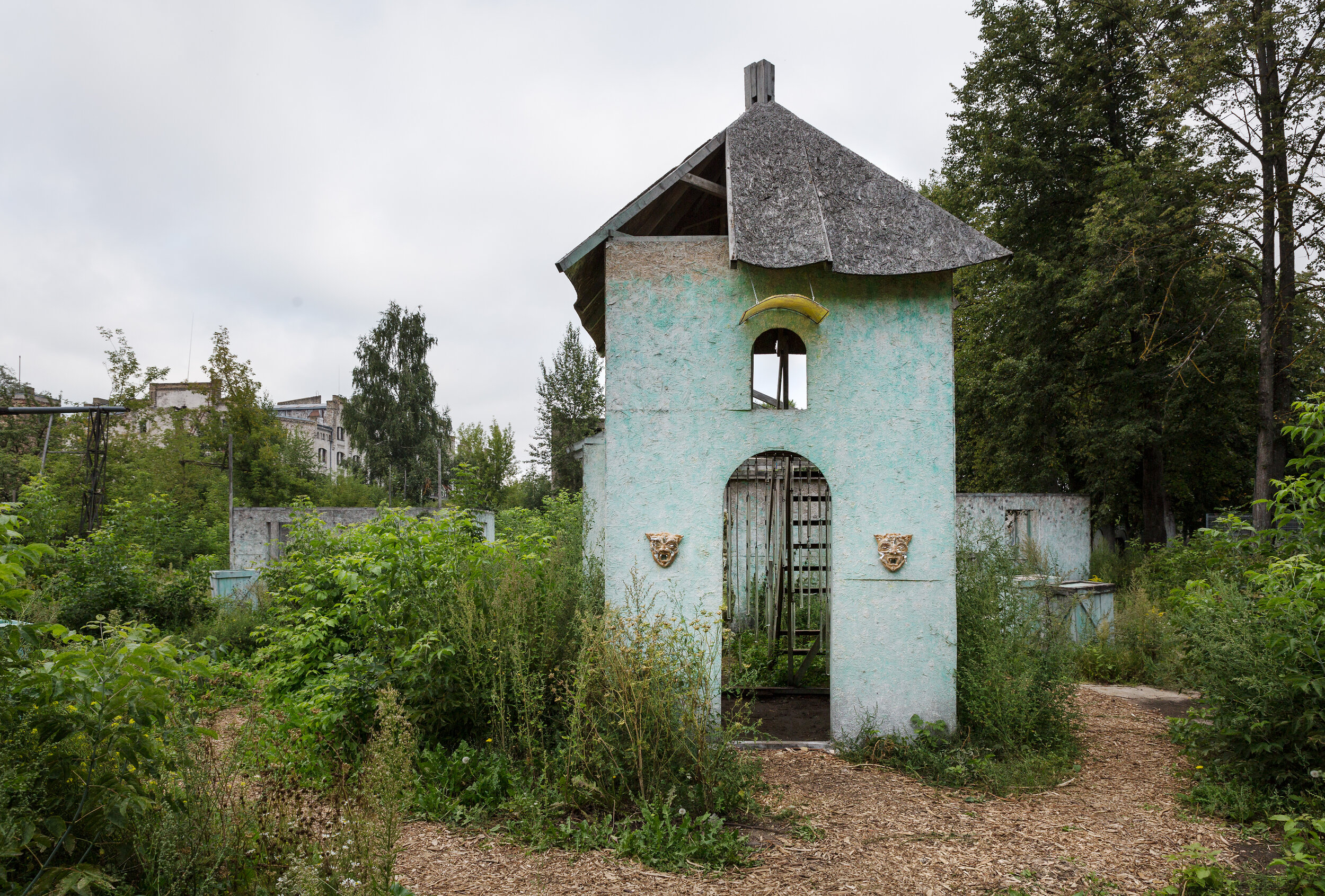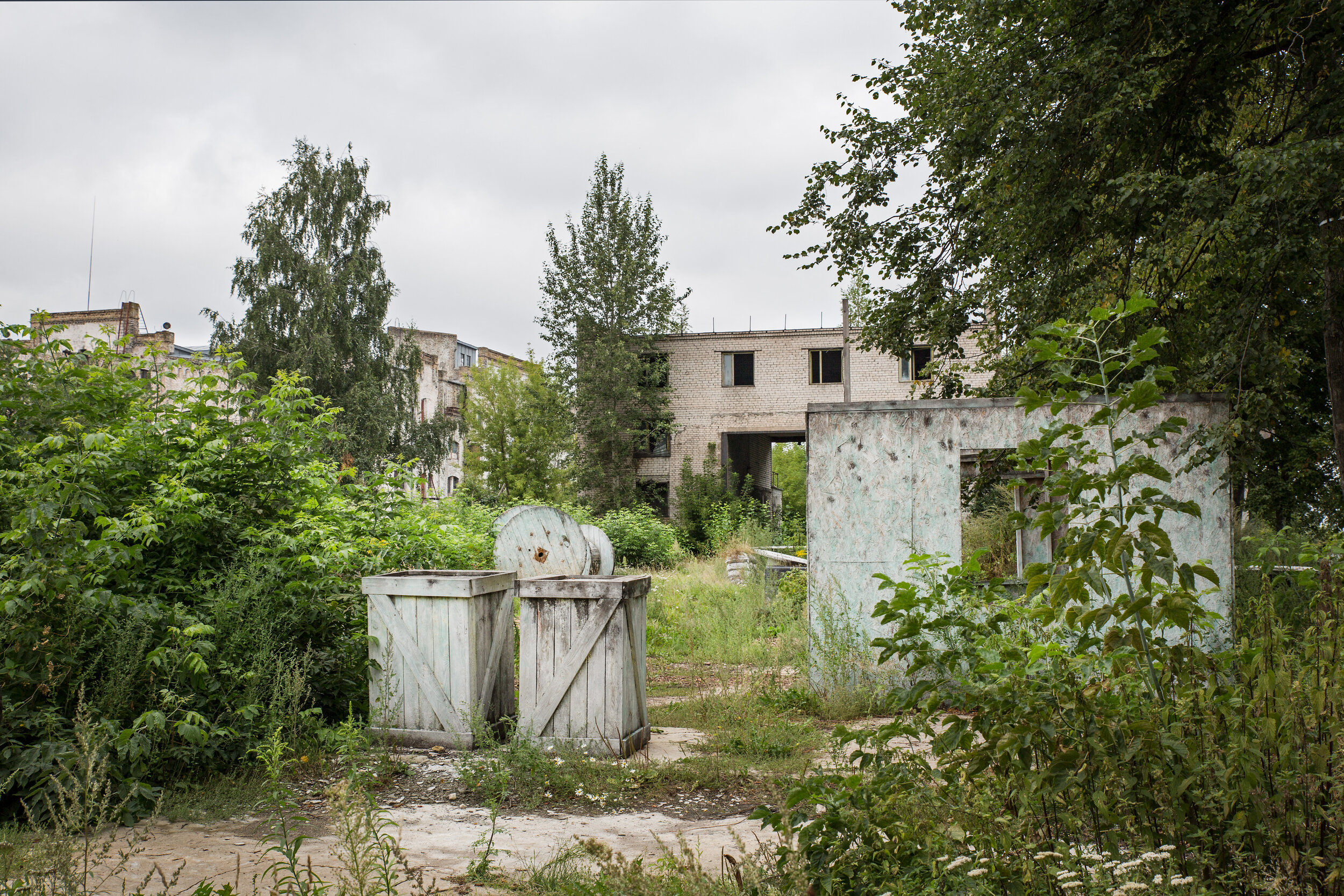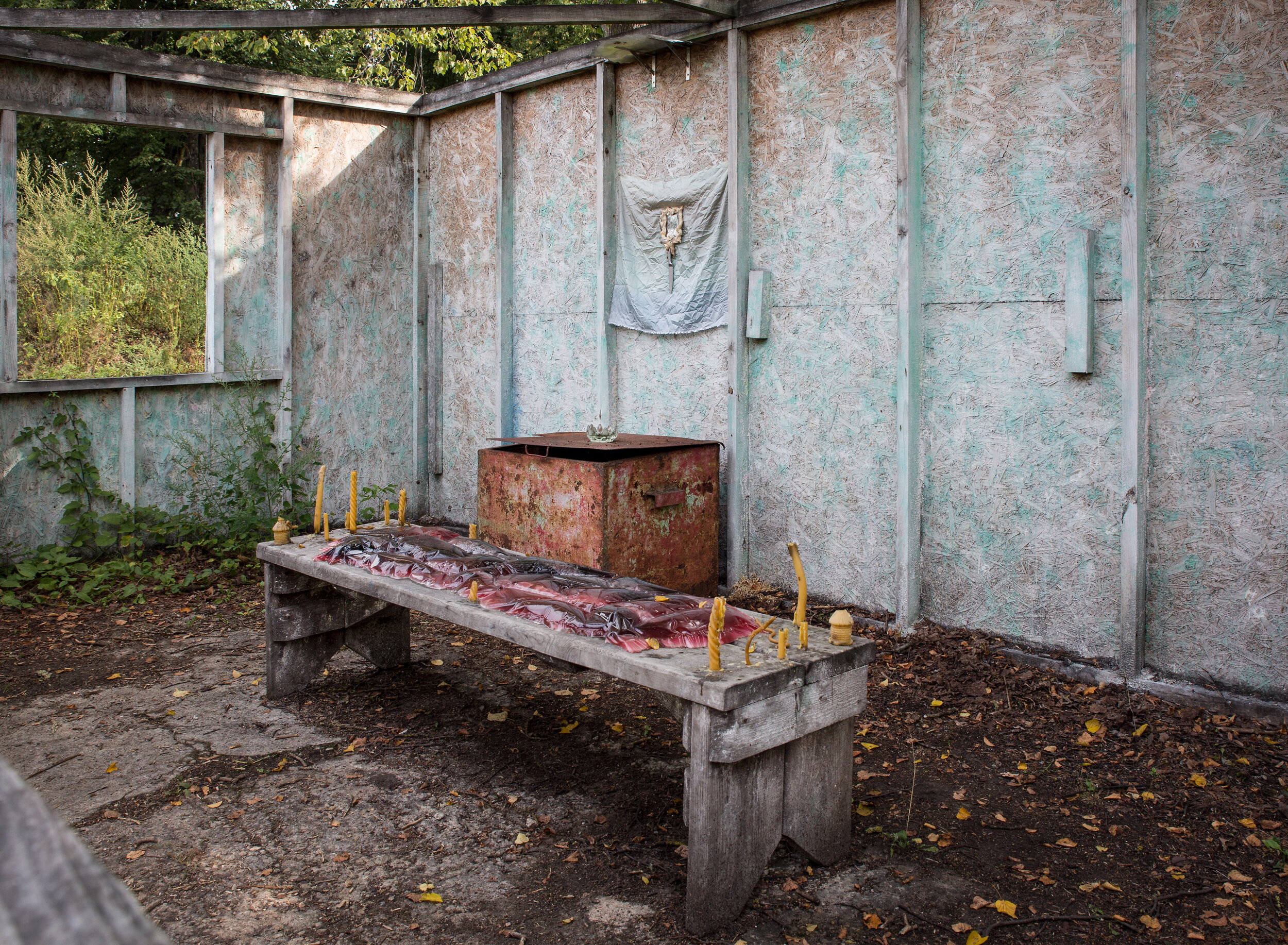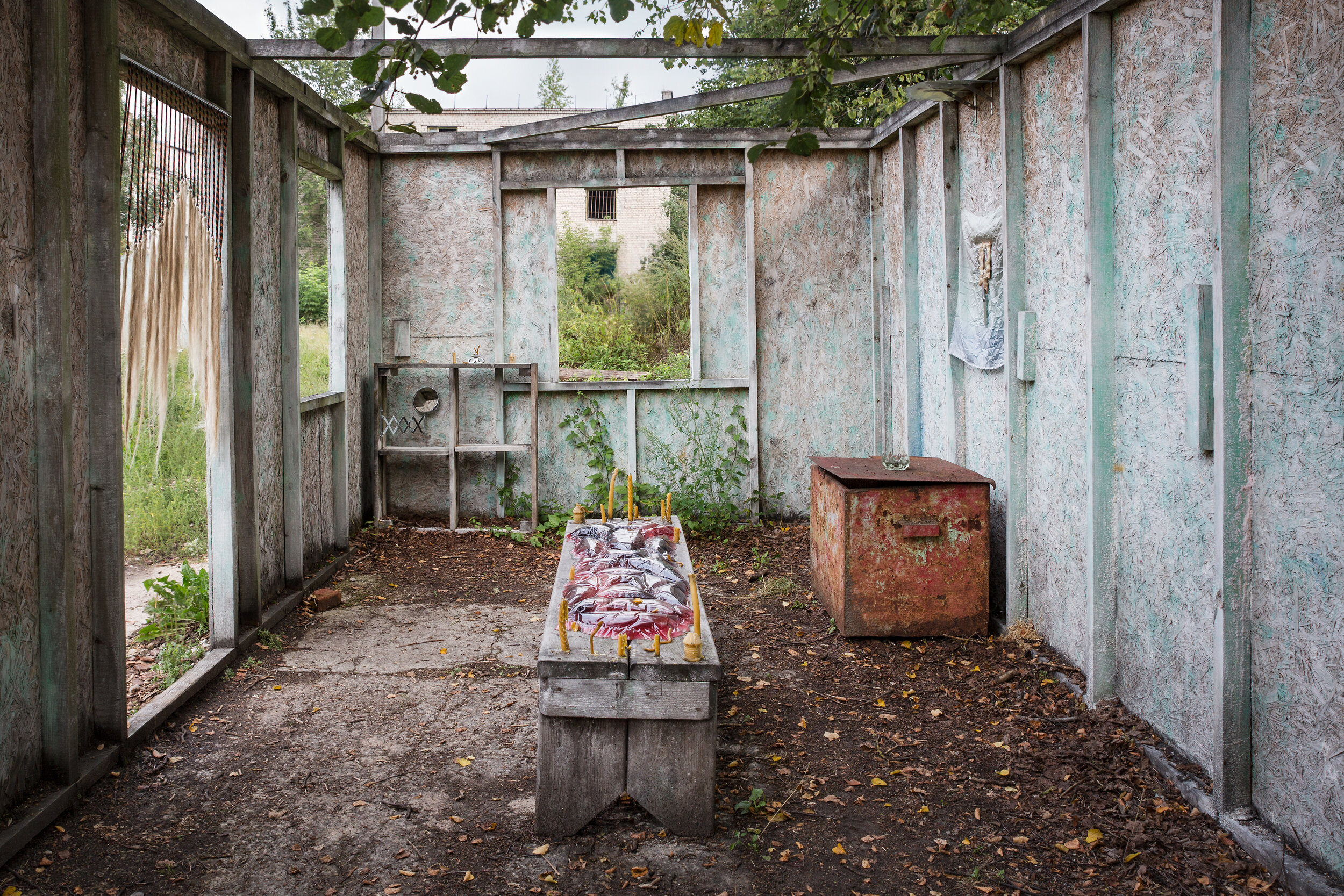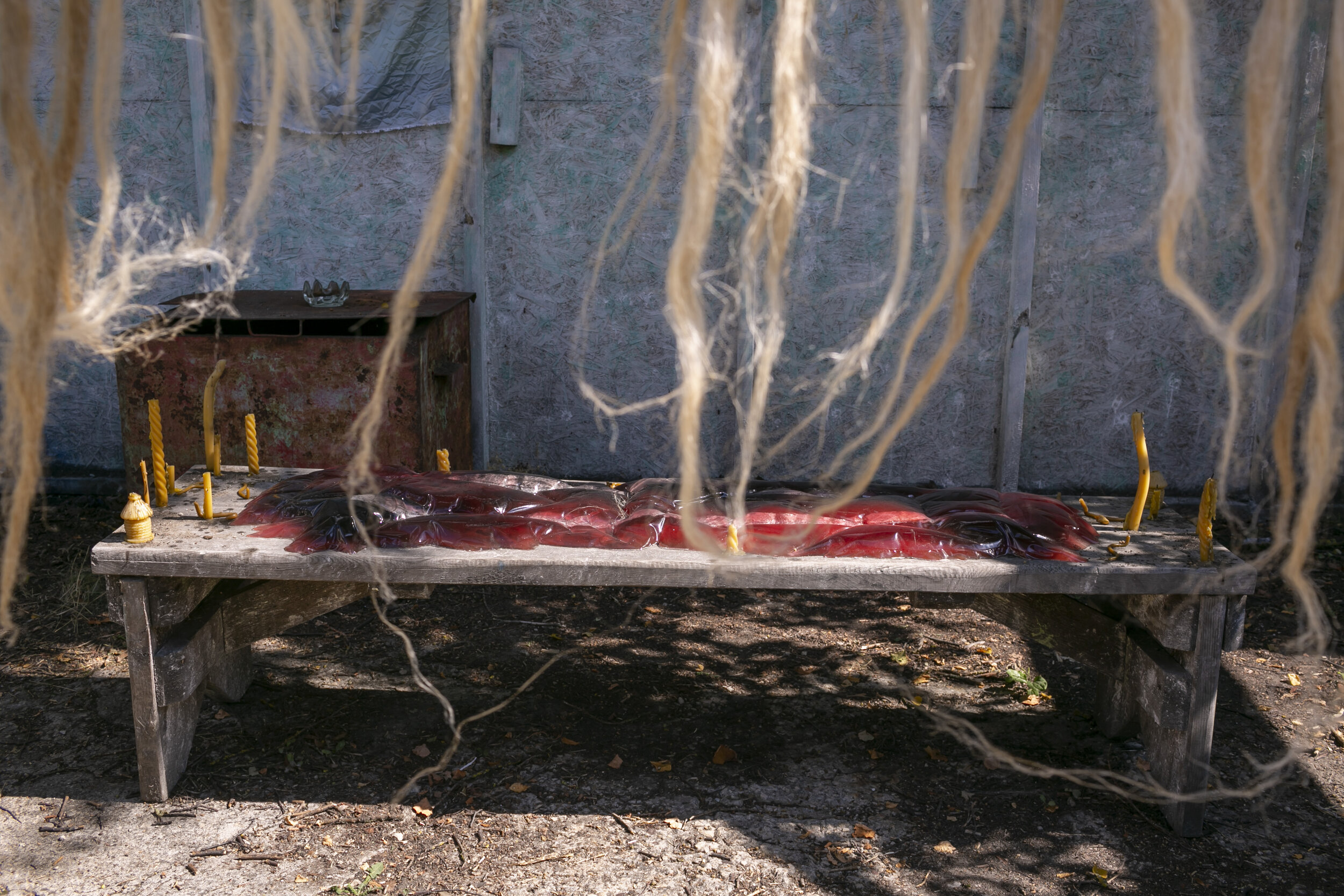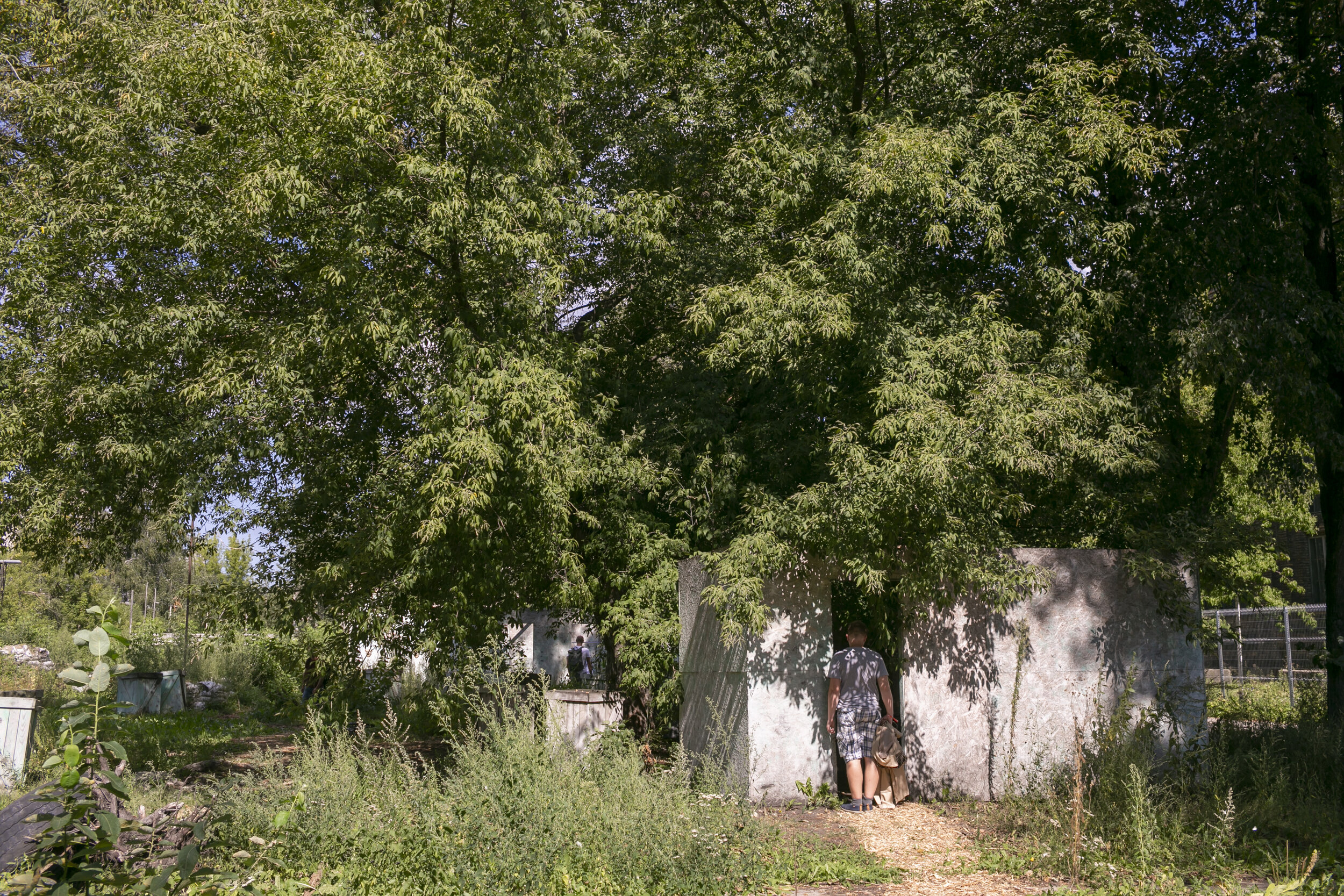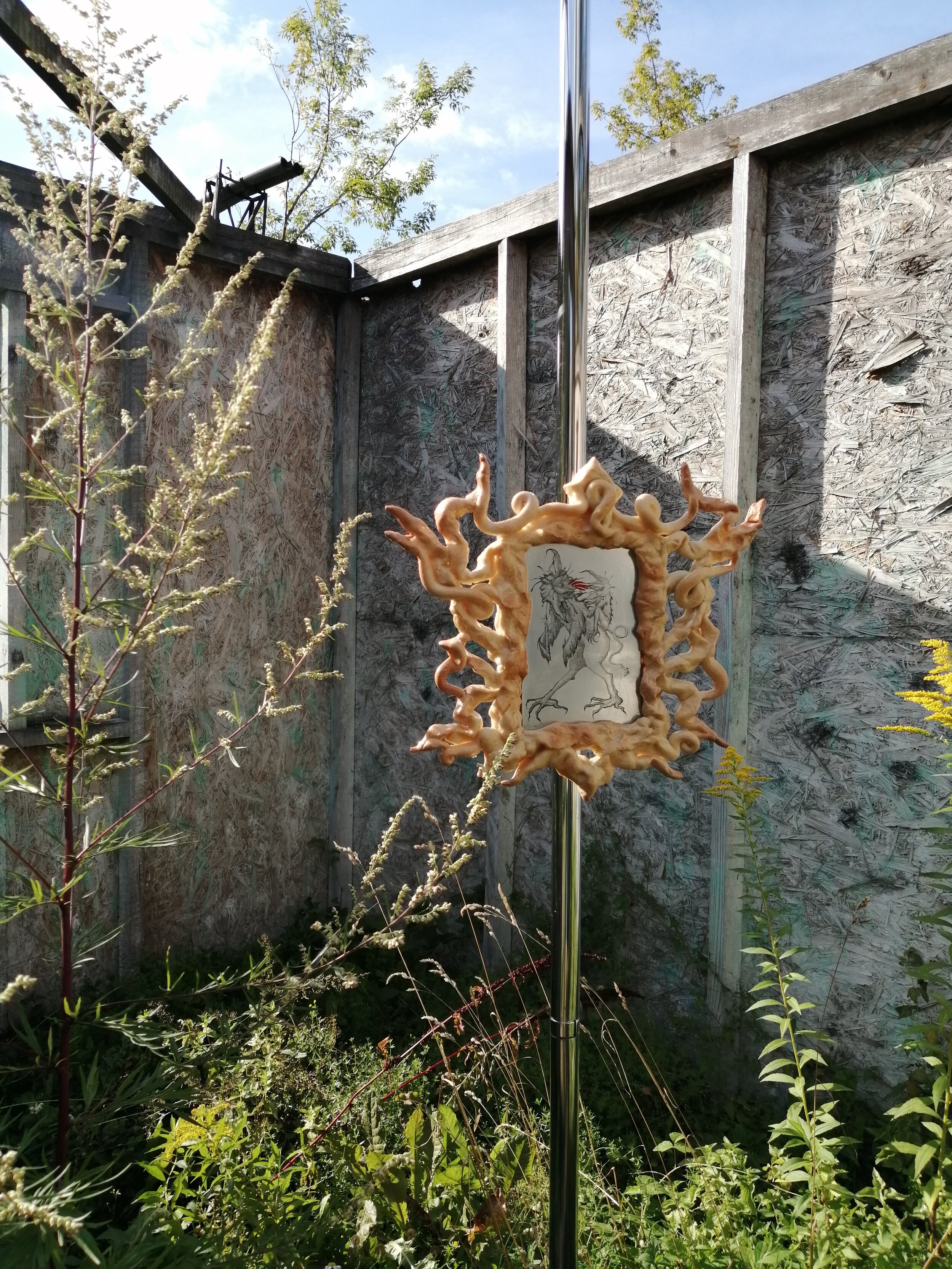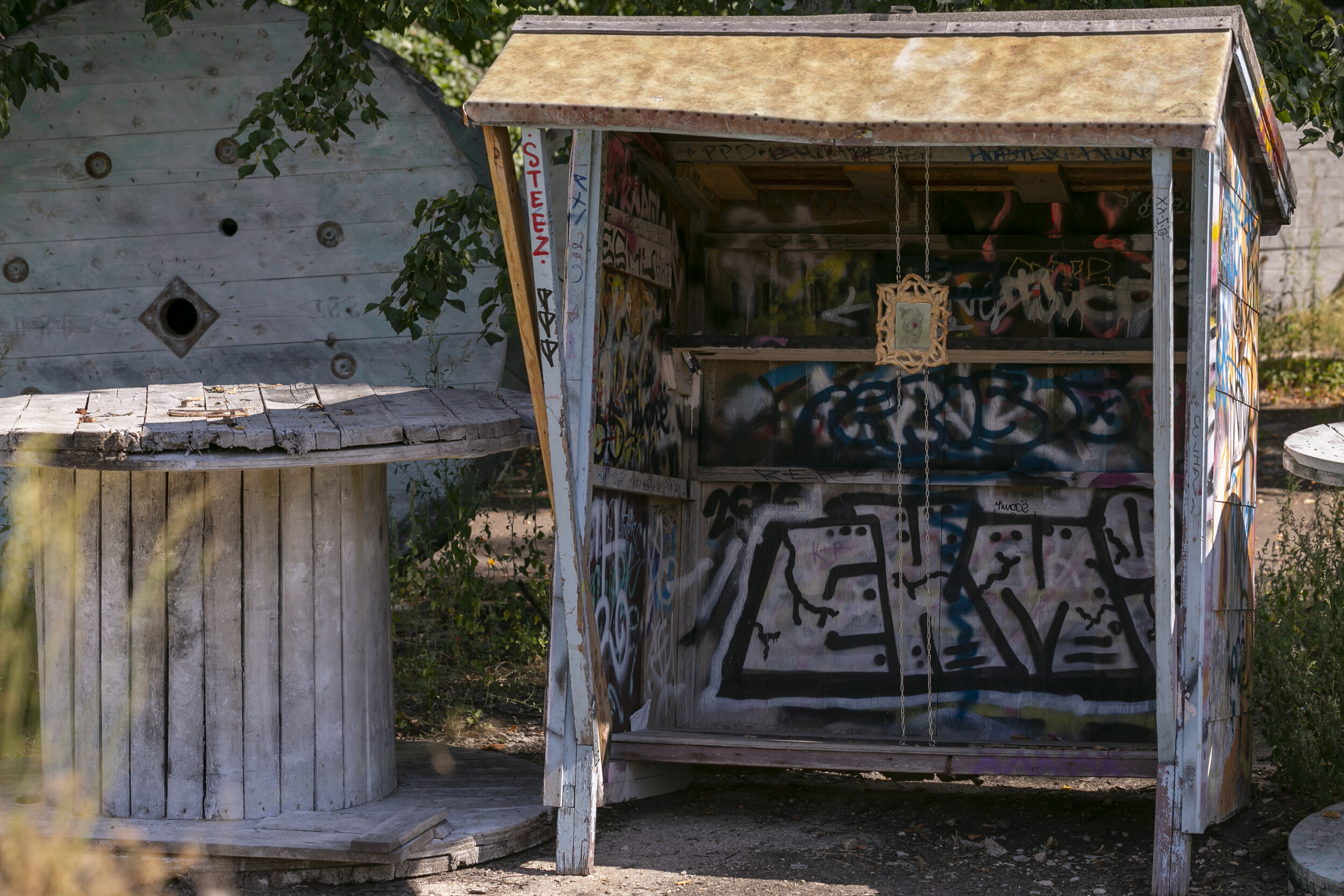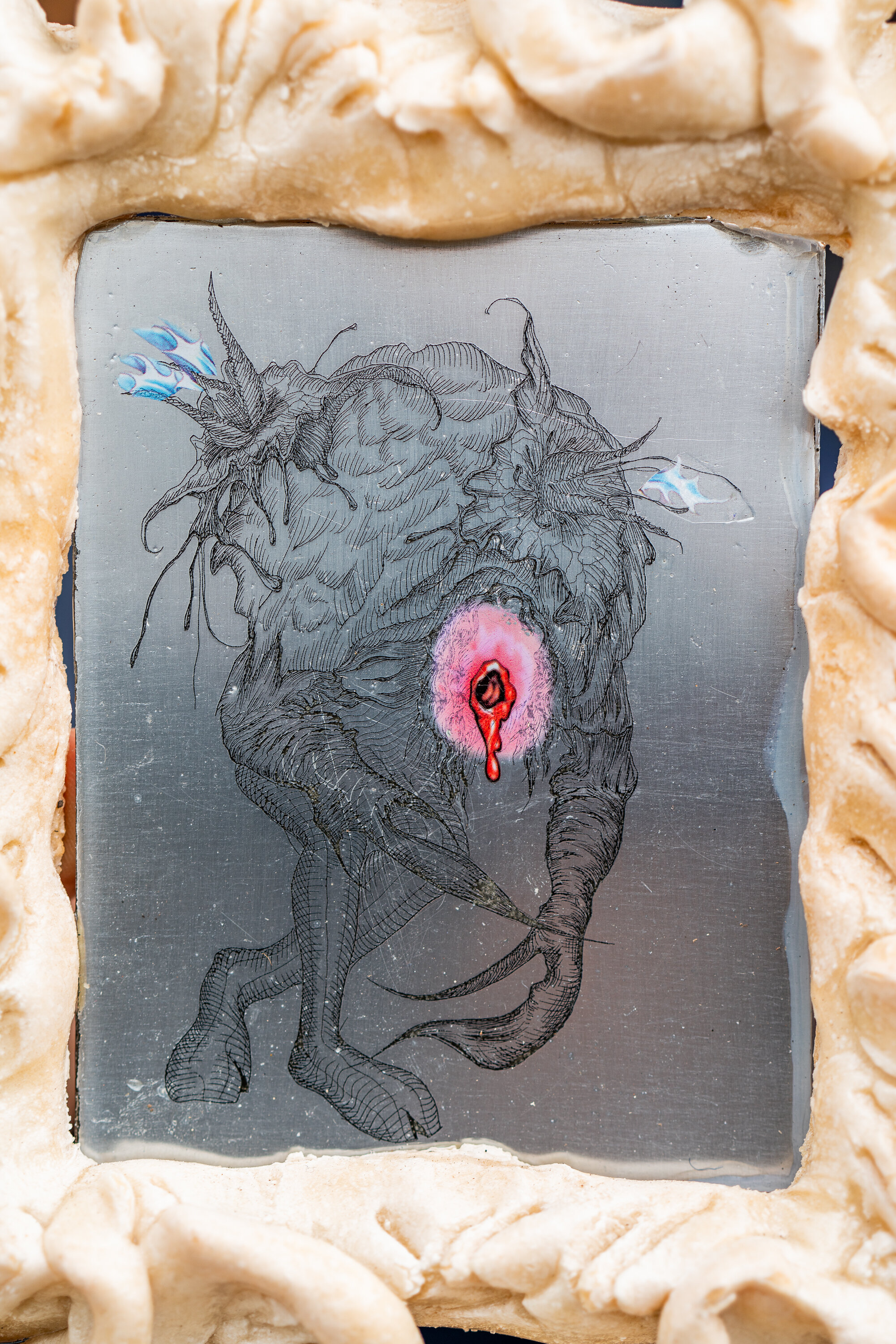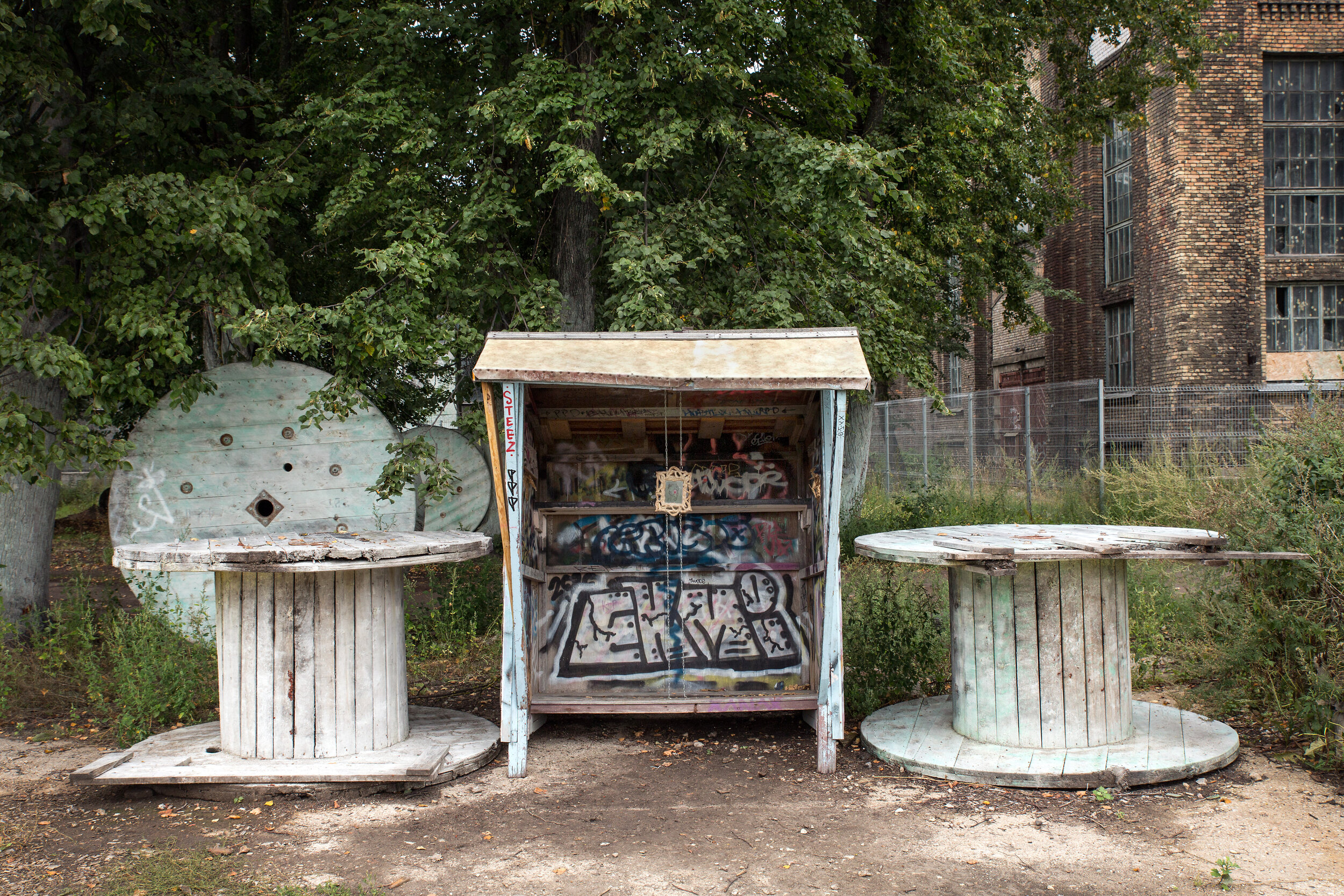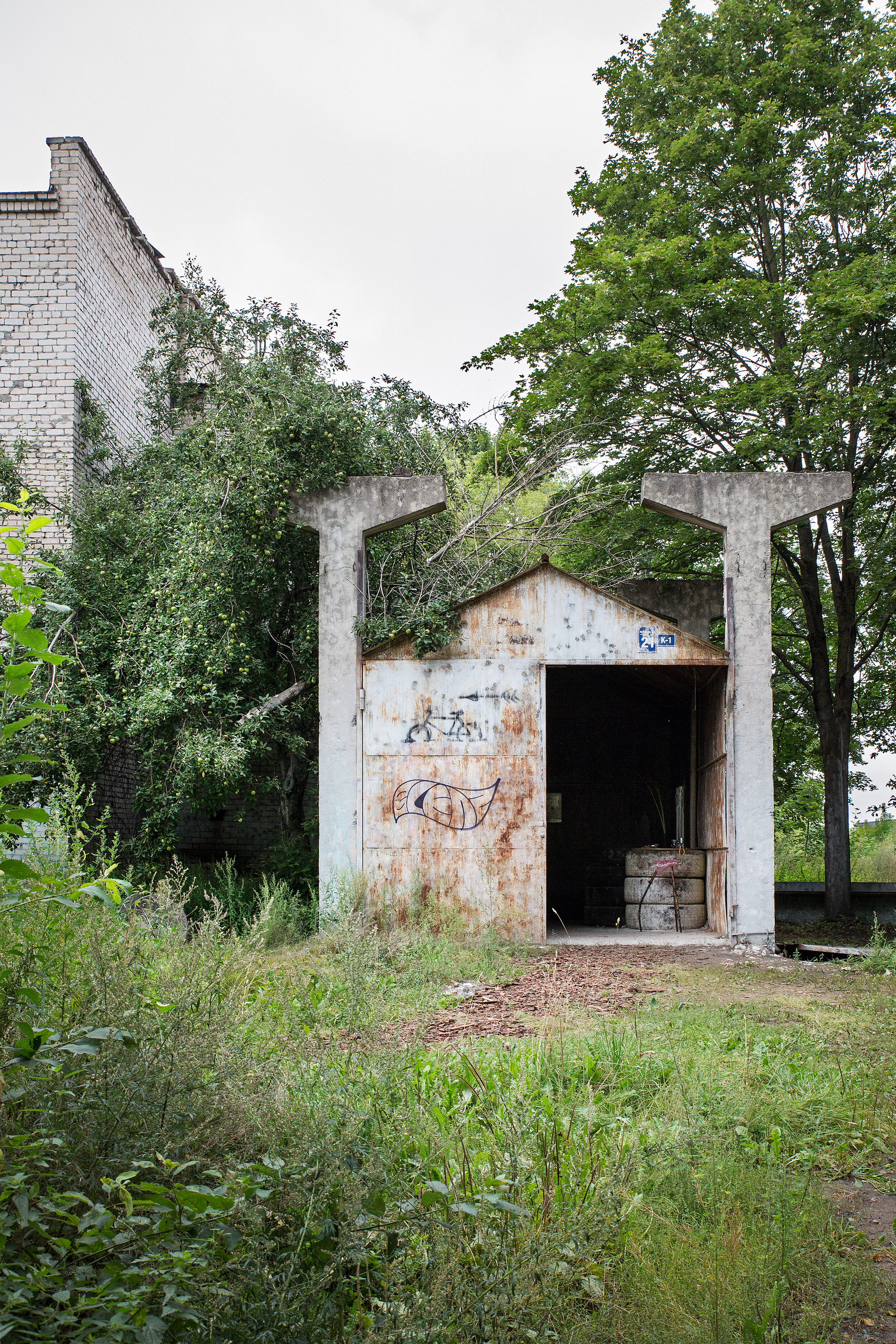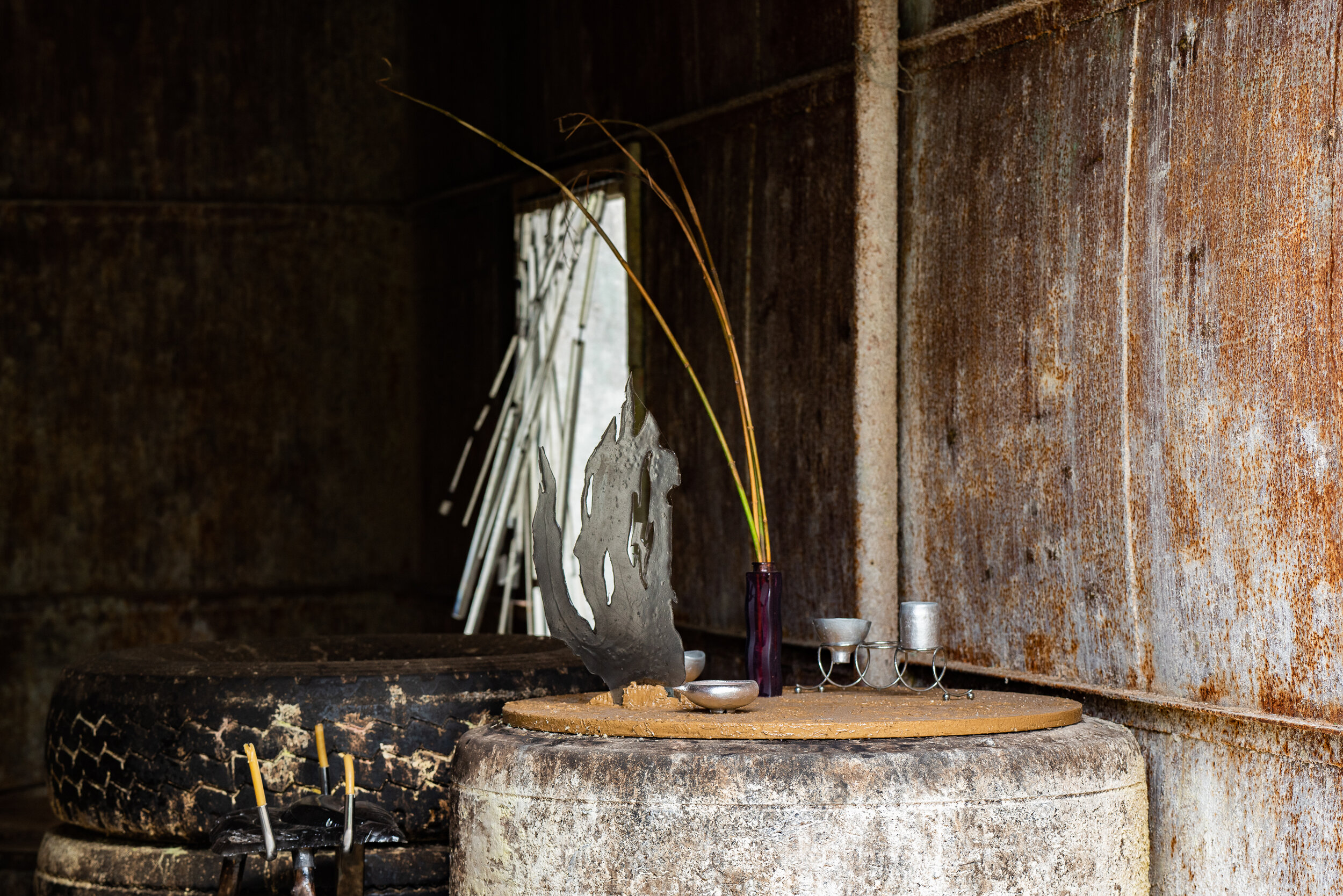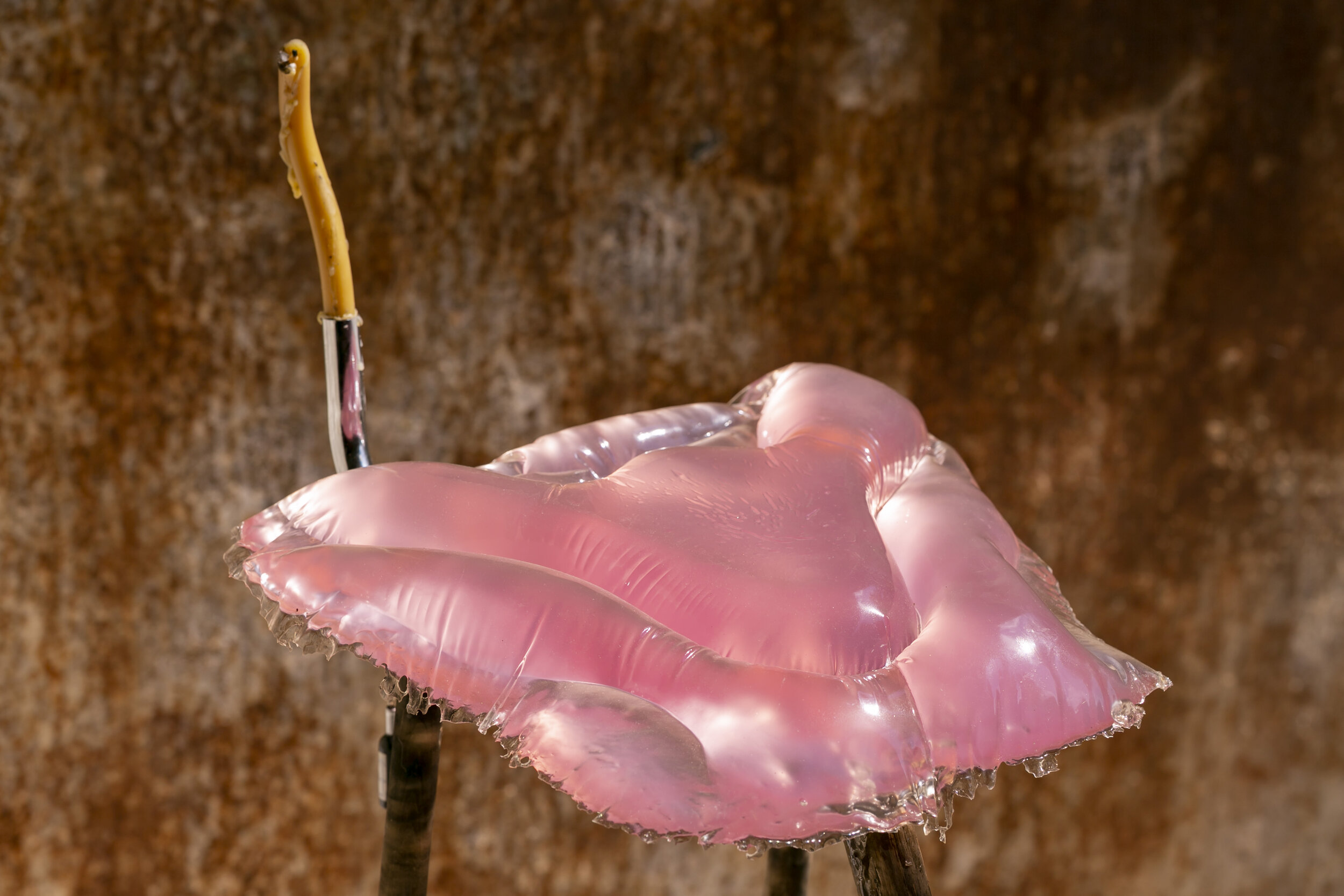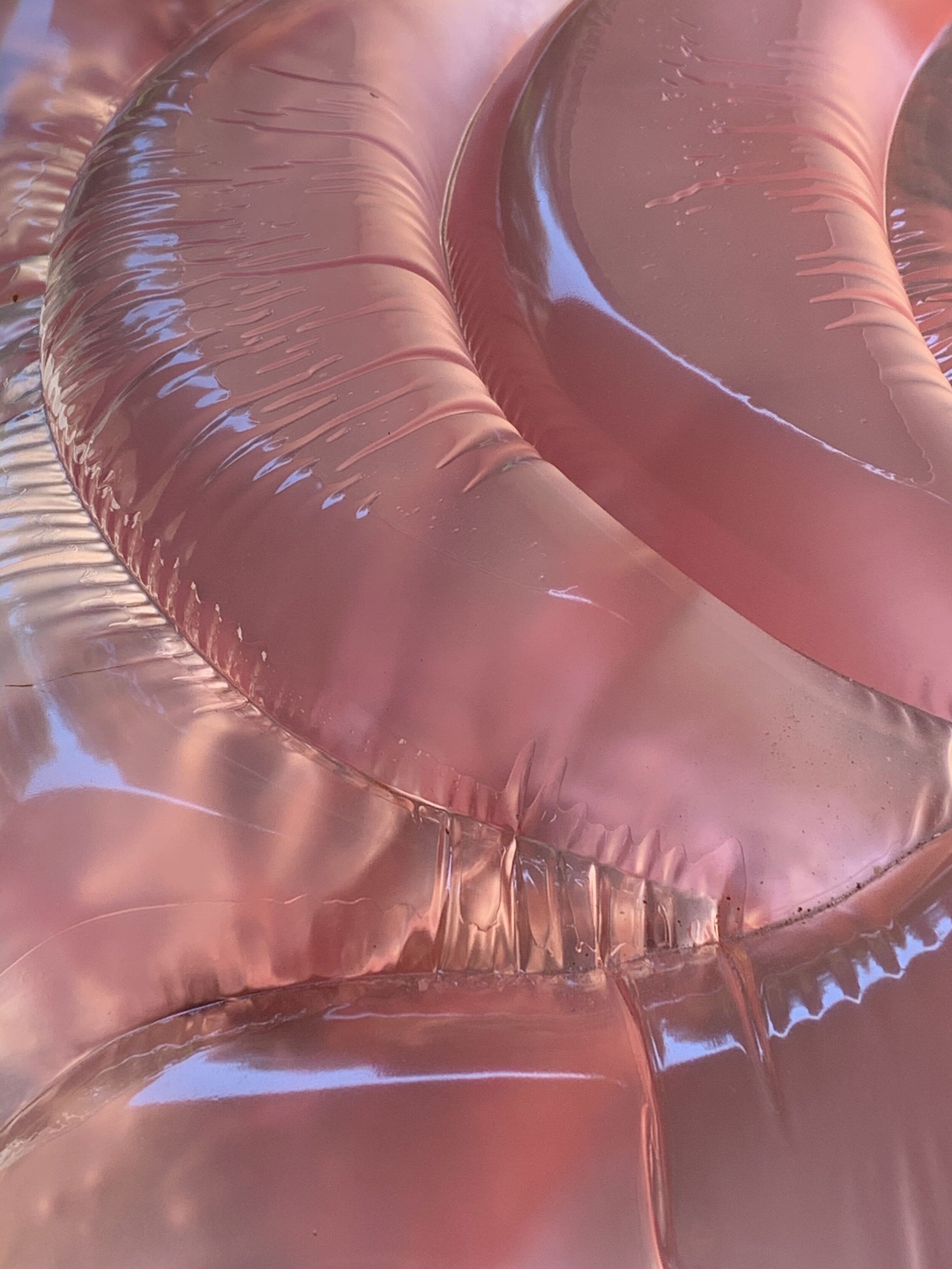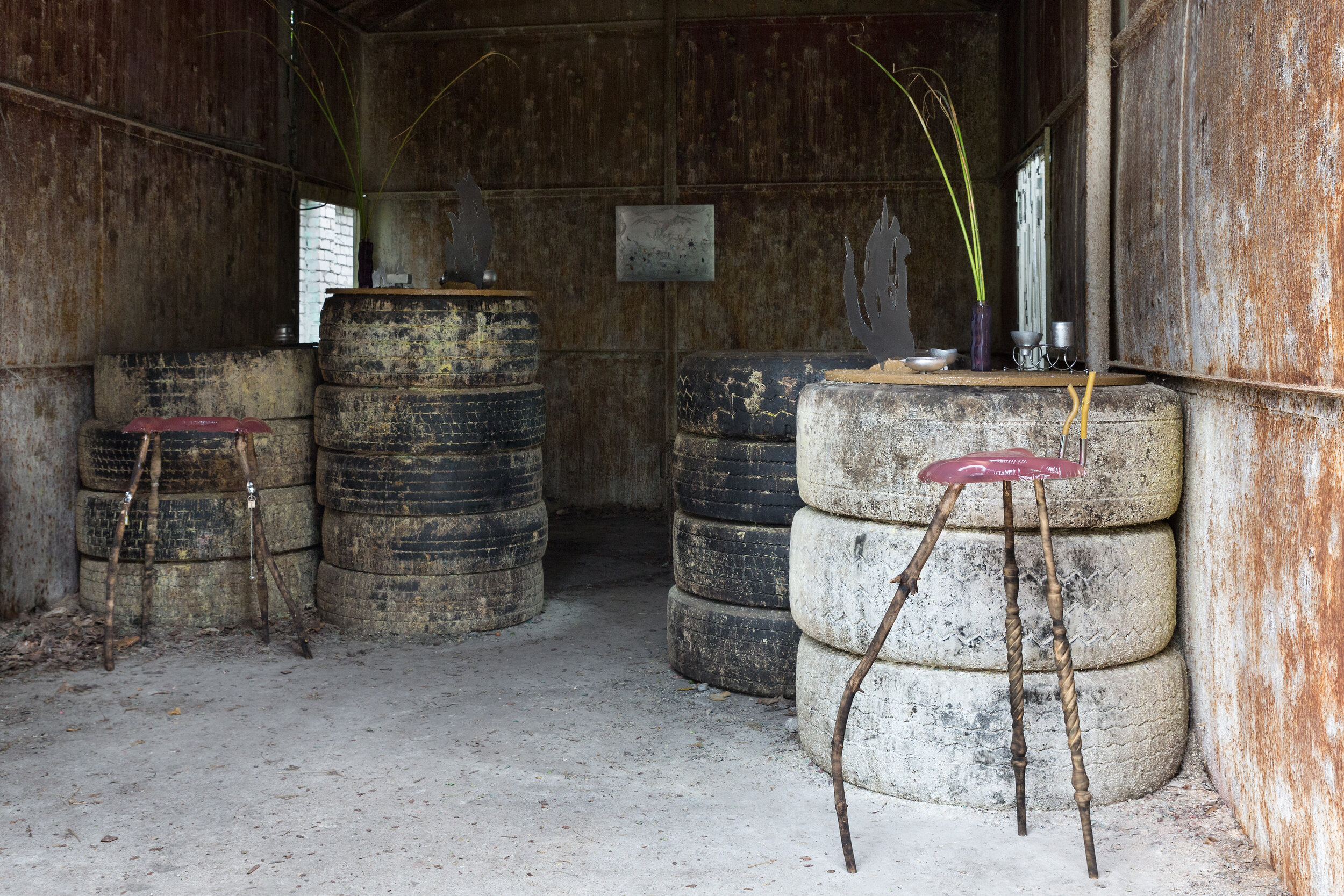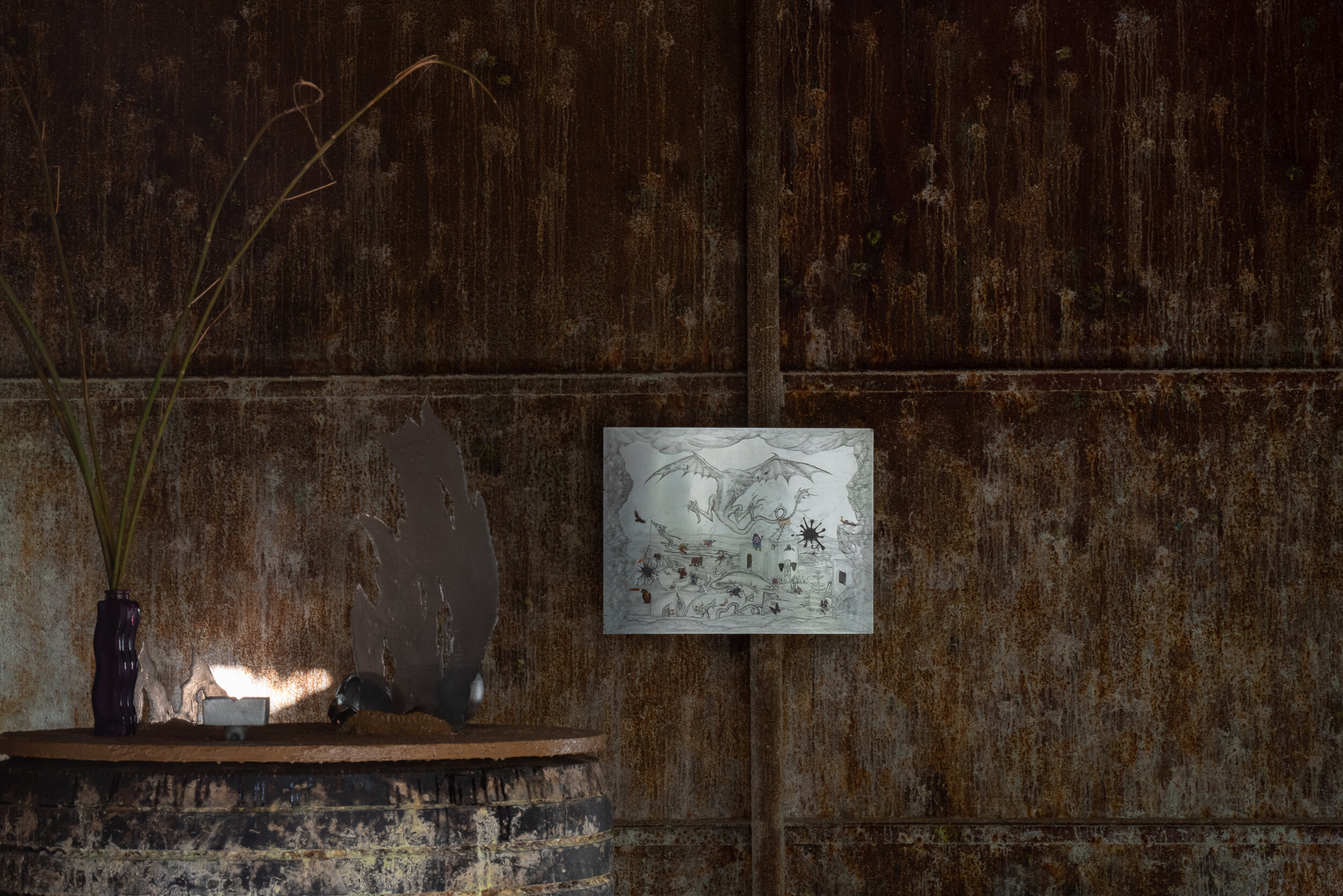HABITABALL Site-specific installation at the open air paintball field
2nd Riga International Biennial of Contemporary Art, RIBOCA2
2020
Curator: Rebecca Lamarche-Vadel
Click on the image or press <— / —>
Taking over Andrejsala’s former paintball field, Anastasia Sosunova creates a Habitaball village — a playful habitat built with the hand-made, the found, the humble and the surreal. The field, mimicking a small town with a variety of obstacles and buildings including houses and a church, was constructed in wood by the paintball business, and left in place when they departed the site. Sosunova treats this field as a ready-made, while reforging its history: she inserts sculptural elements that form the traces of a fictional community which, according to the artist’s legend, lived through play, communicated by spitting paint and worshipped stray cats. This inhabitation takes shape through a collection of uncanny elements, including cast and modified household furniture, baked salt dough, metal and resin-coated sculptures, and assemblages of found objects from the area. The embellishment of these domestic and public spaces bring the mock village one degree closer to reality. As Sosunova notes, “an urban paintball field is a conceptual field, where wooden box structures stand in for a neighbourhood, representations of the political, socio-economic, cultural tensions happening in human habitats”. The paintball field is a 1:1 scale representation, where the neighbourhood is reconstituted as a site of explicit conflict, which is to be resolved through play.
The theorist Johan Huizinga characterises humans as Homo Ludens, ‘man the player’, arguing that play is an integral element in the production of culture. The adversarial nature of play is evidenced by games of wrestling, tournaments and arenas as old as humankind: “Ever since words existed for fighting and playing, men have been wont to call war a game”. The mimetic nature of paintball, based on simulacra and imitation, makes the boundary between recreation and predation a porous one. These blurred lines are reflected in the neologism militainment, merging the terms of ‘military’ and ‘entertainment’. In this context, the installation takes on the logic of an RPG quest in an abandoned open air ethnographic museum exhibit, raising a new set of concerns about the ethnographic gaze and subjective interpretation.
Photos: Hedi Jaansoo, Alexey Koshkin
